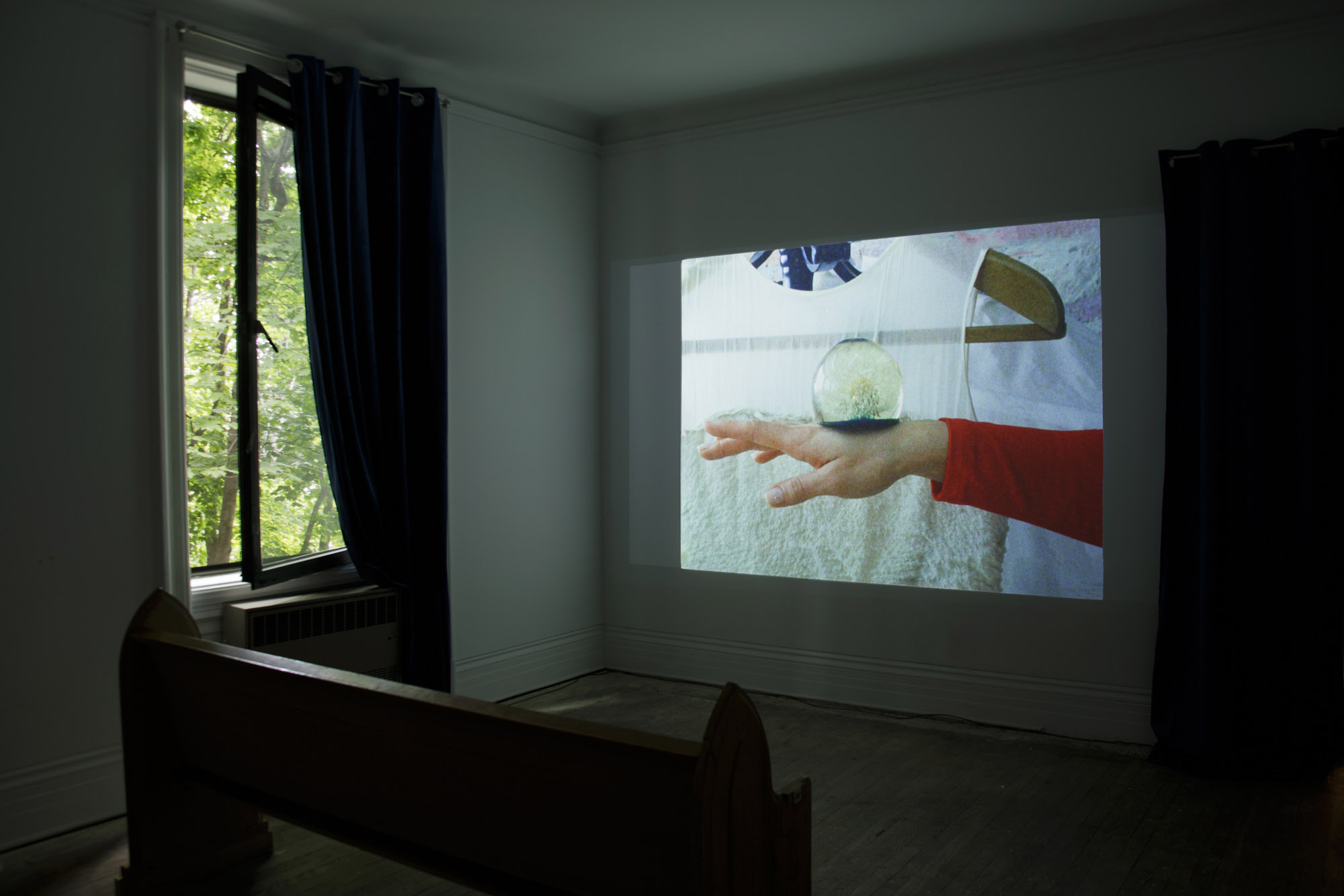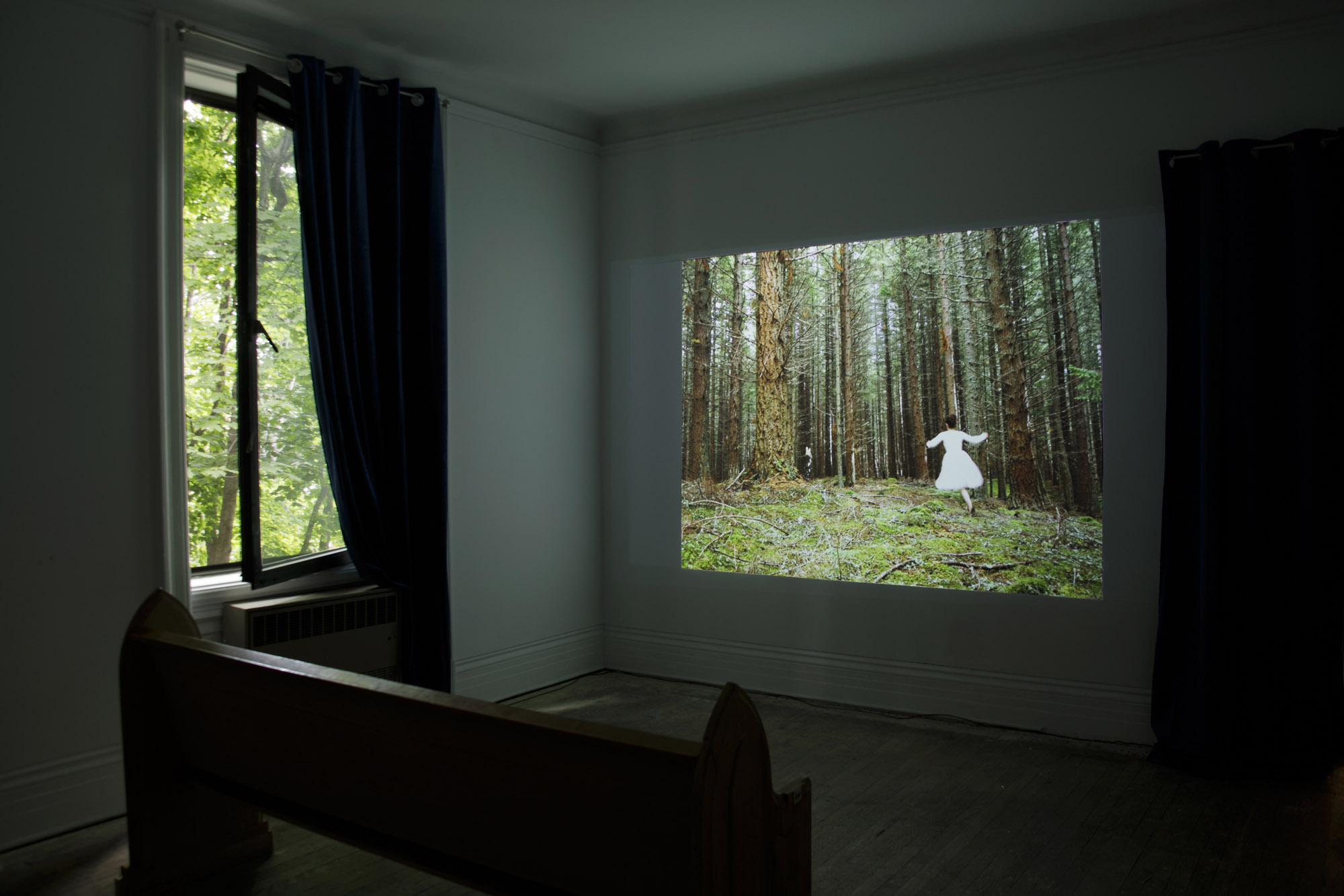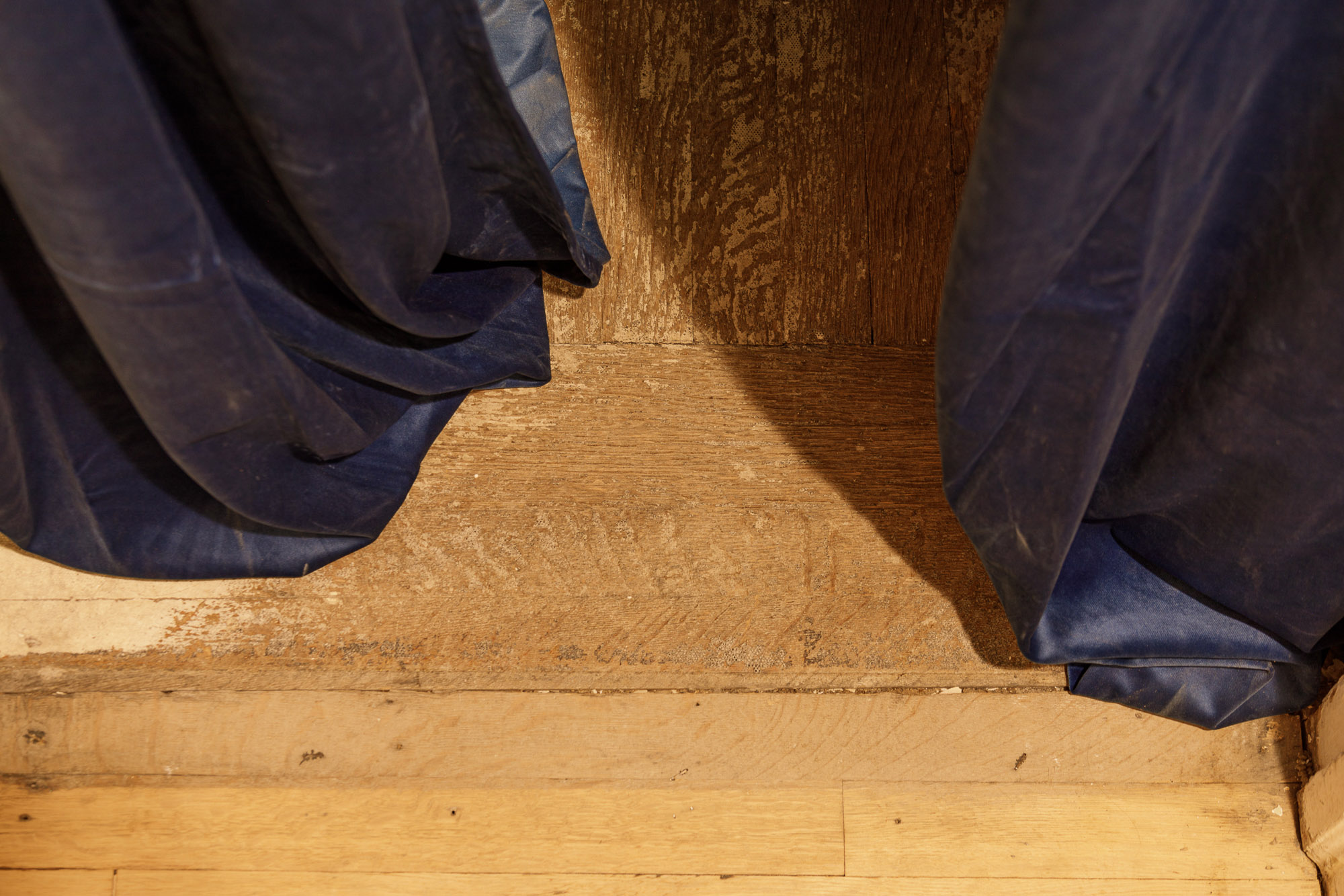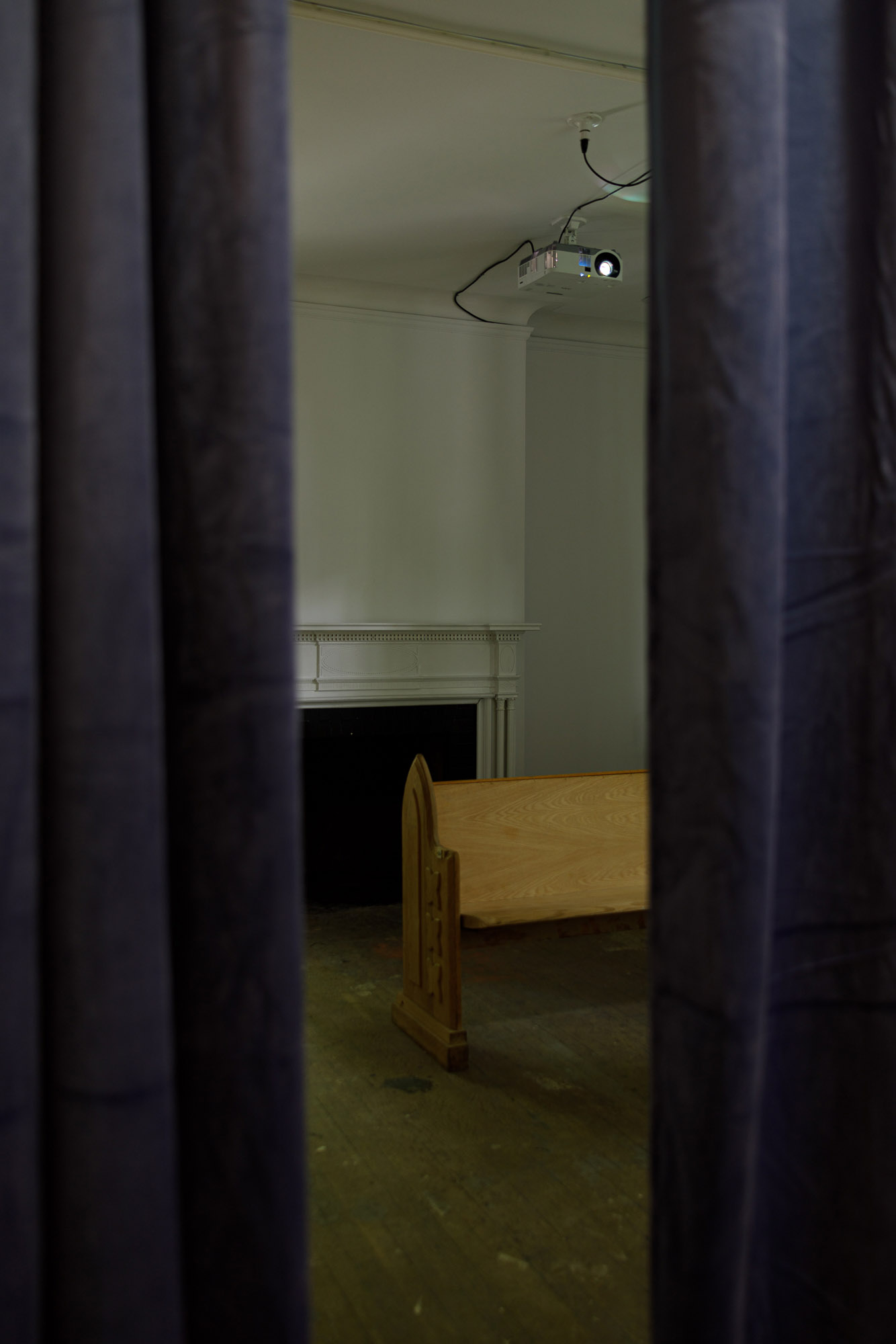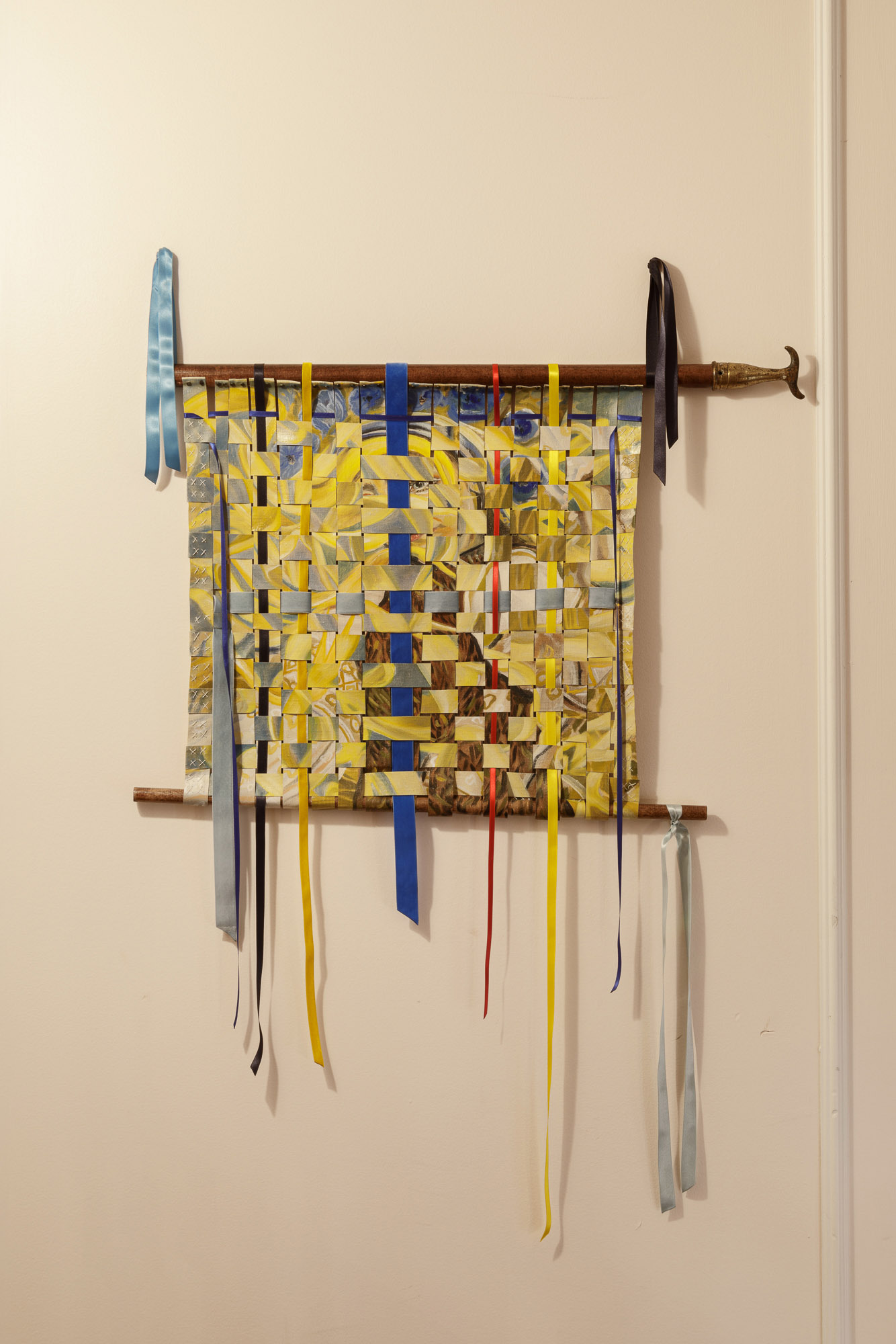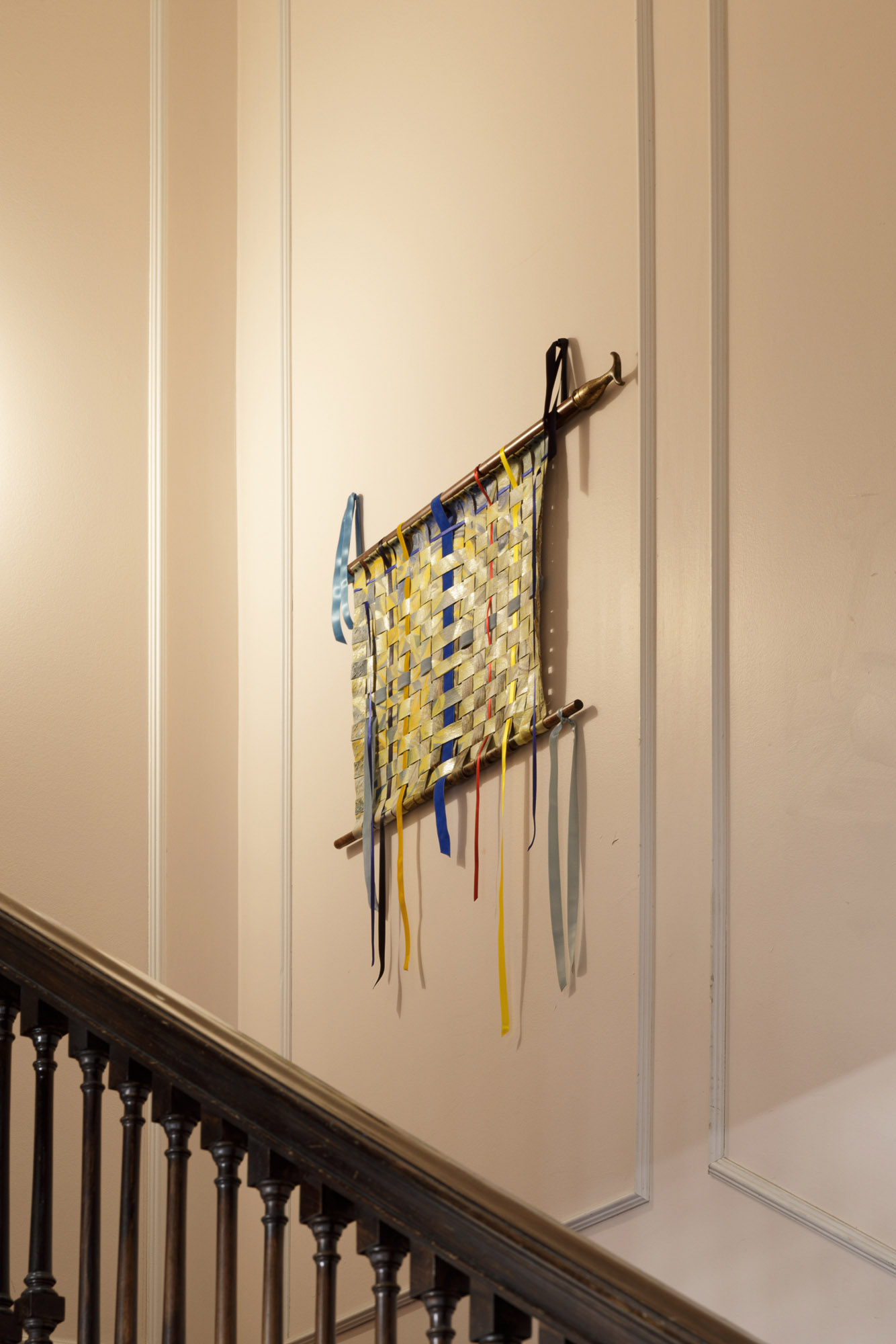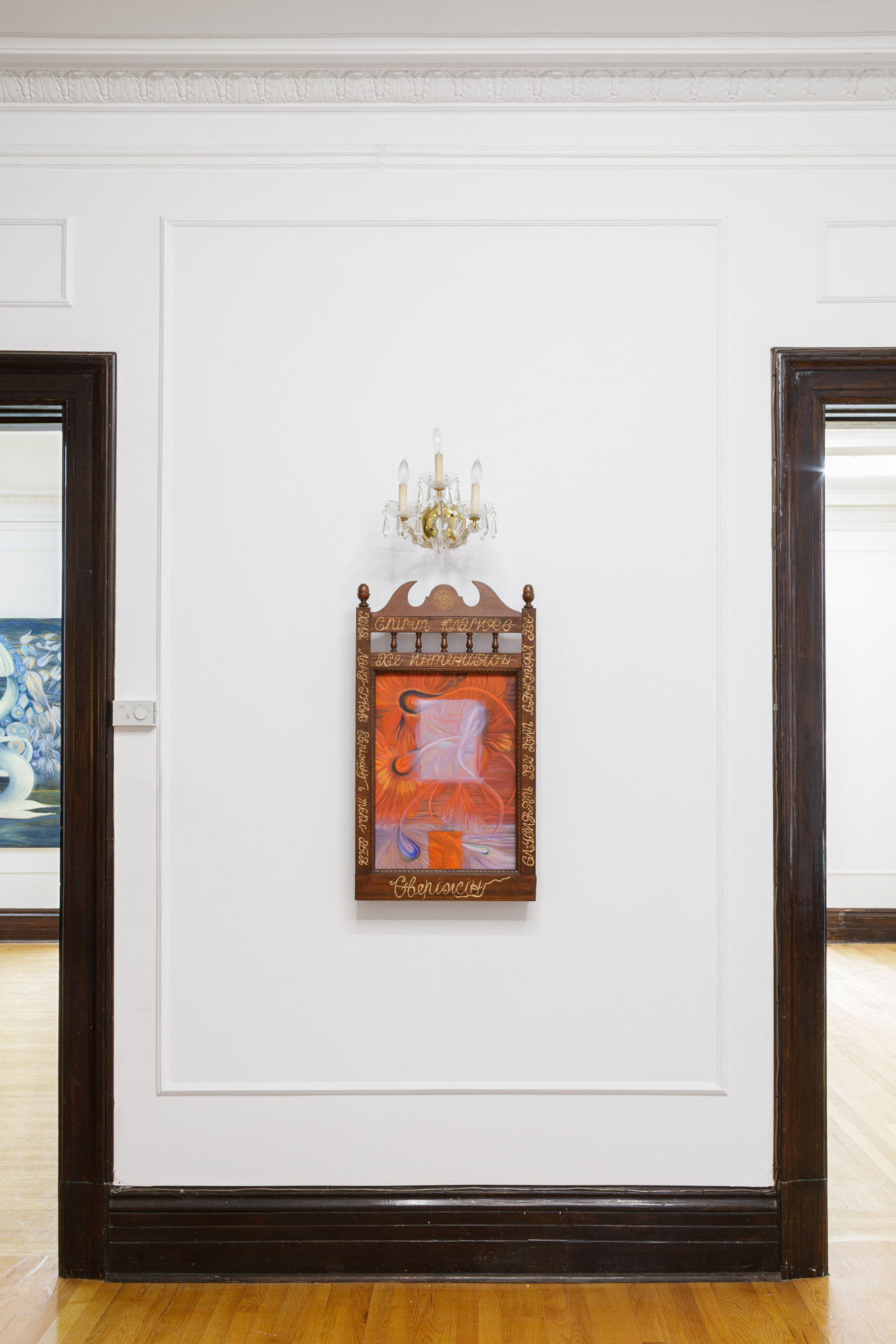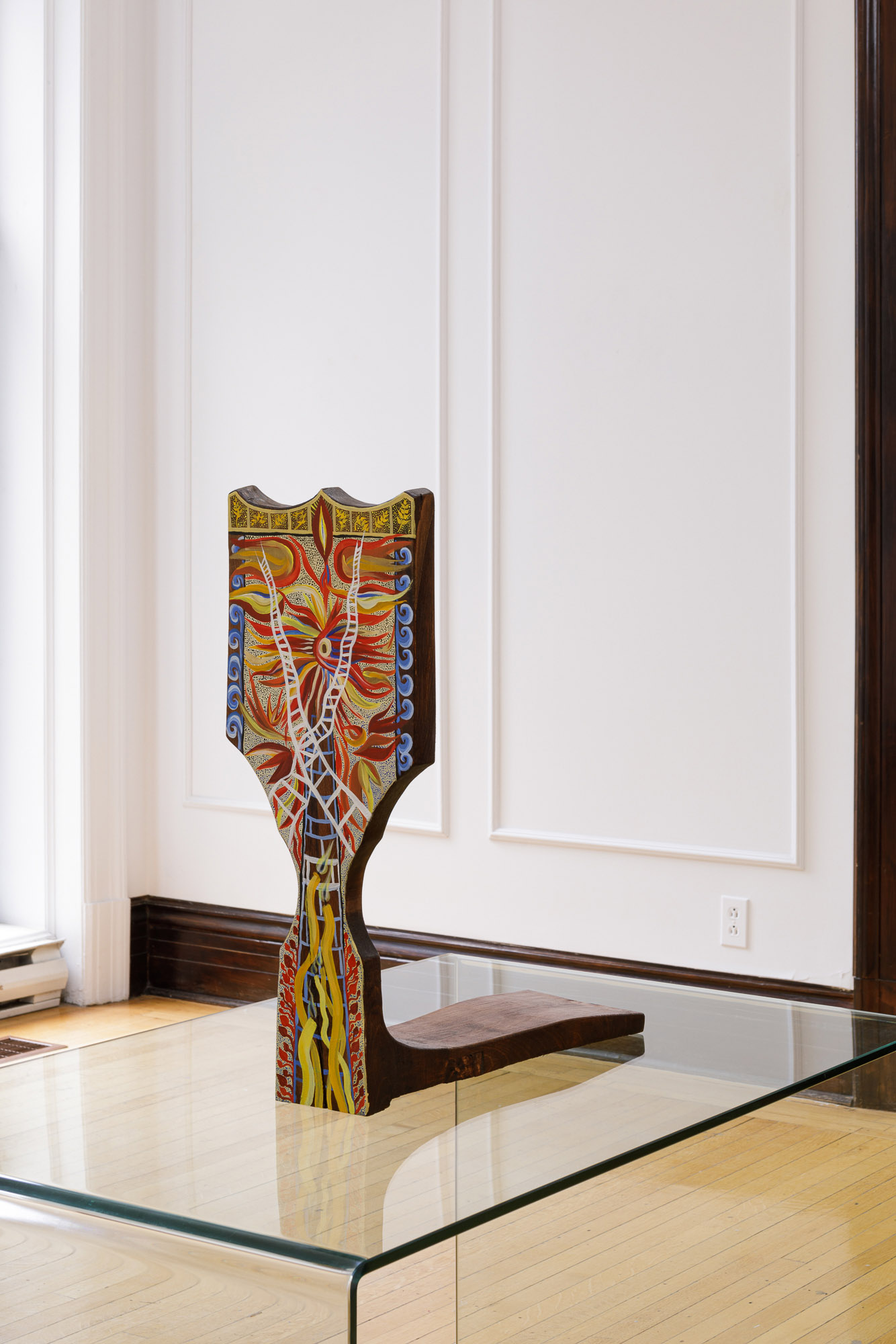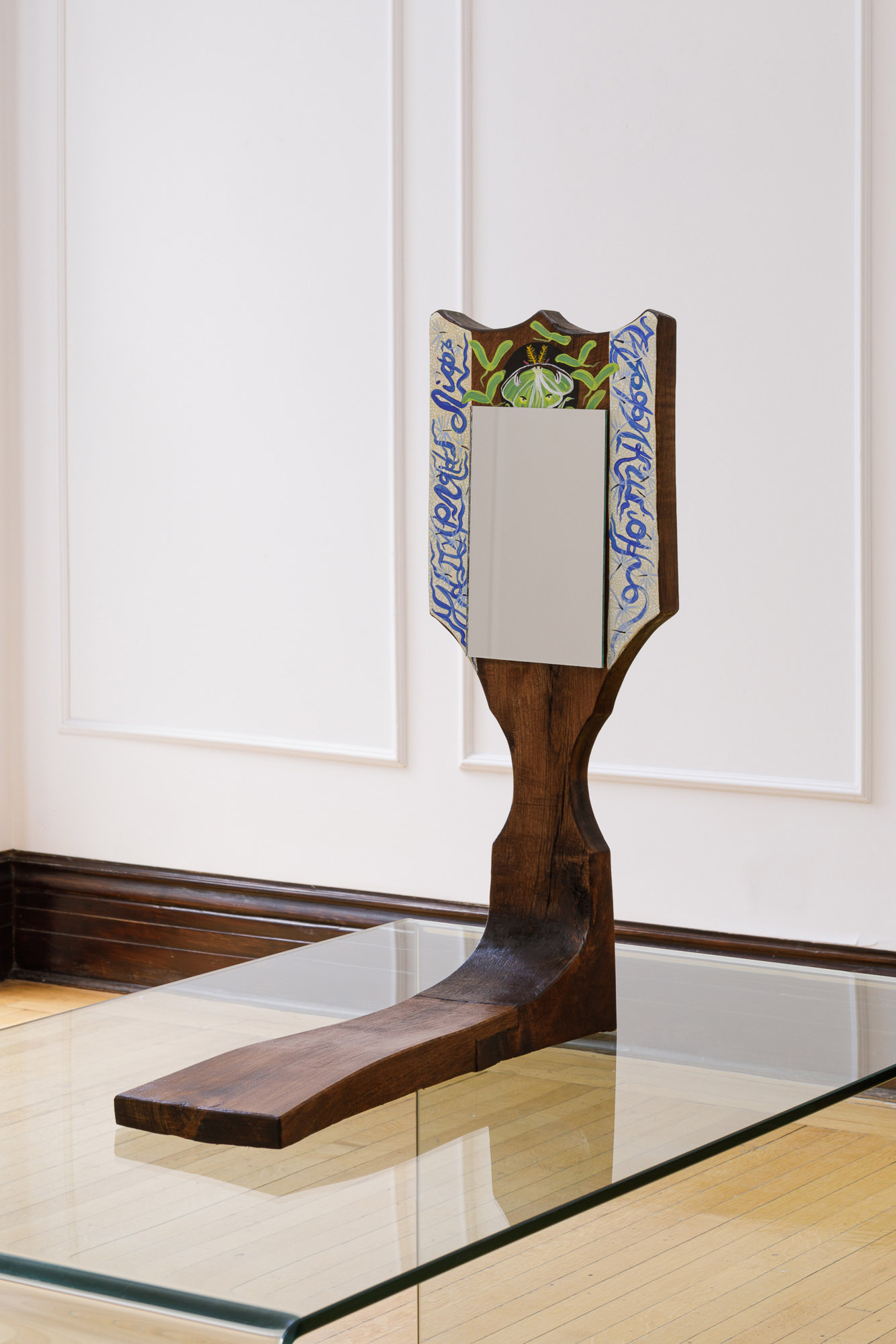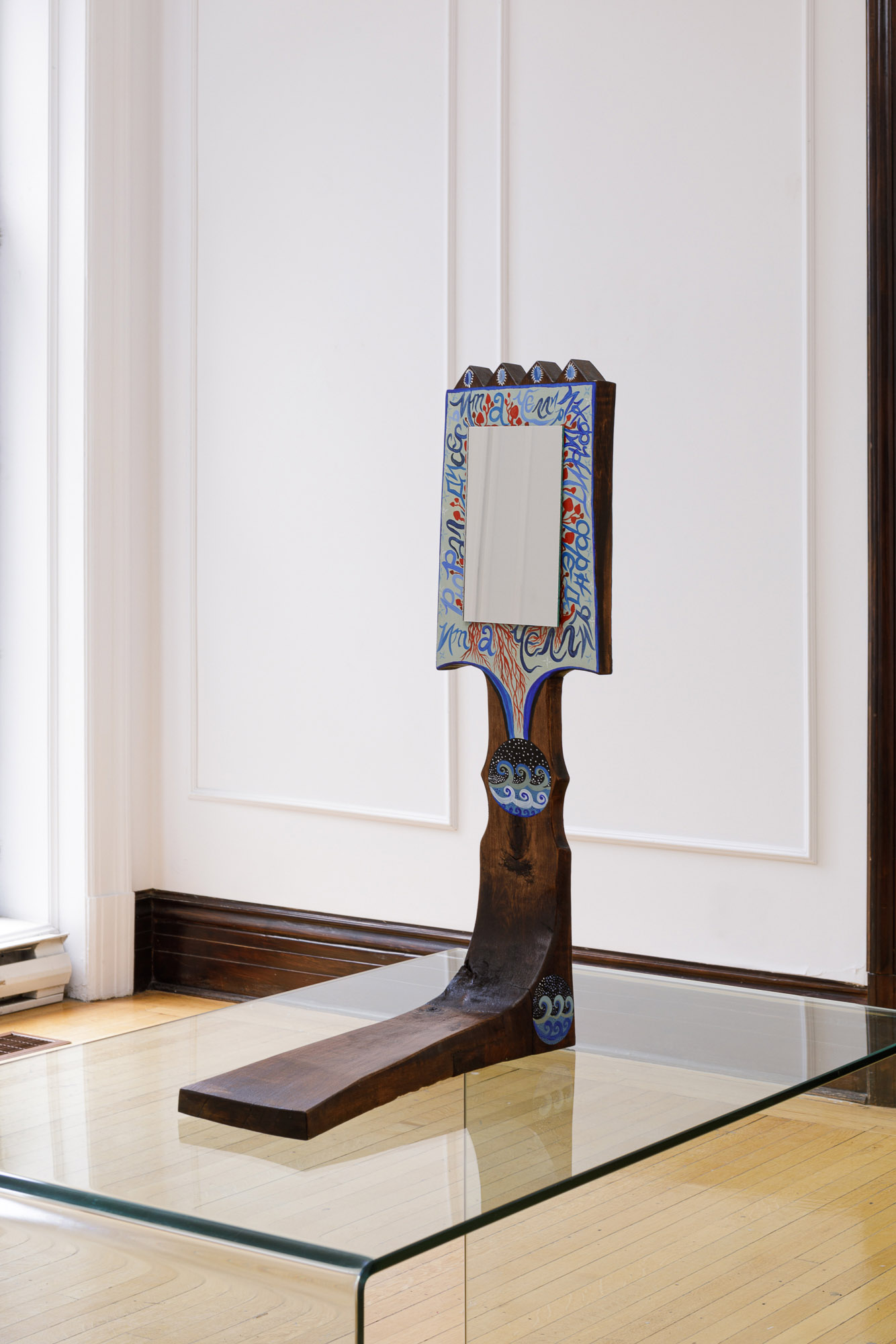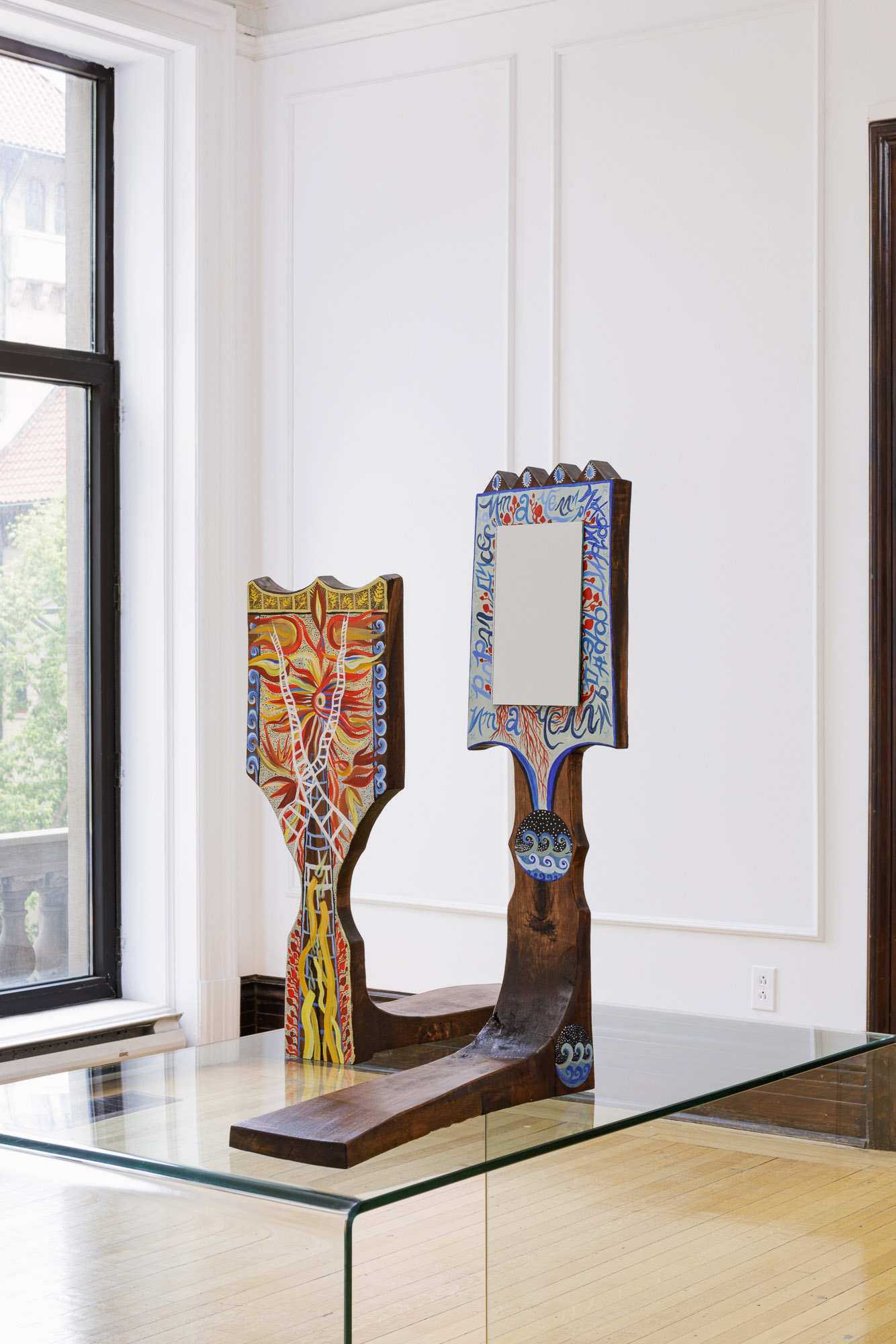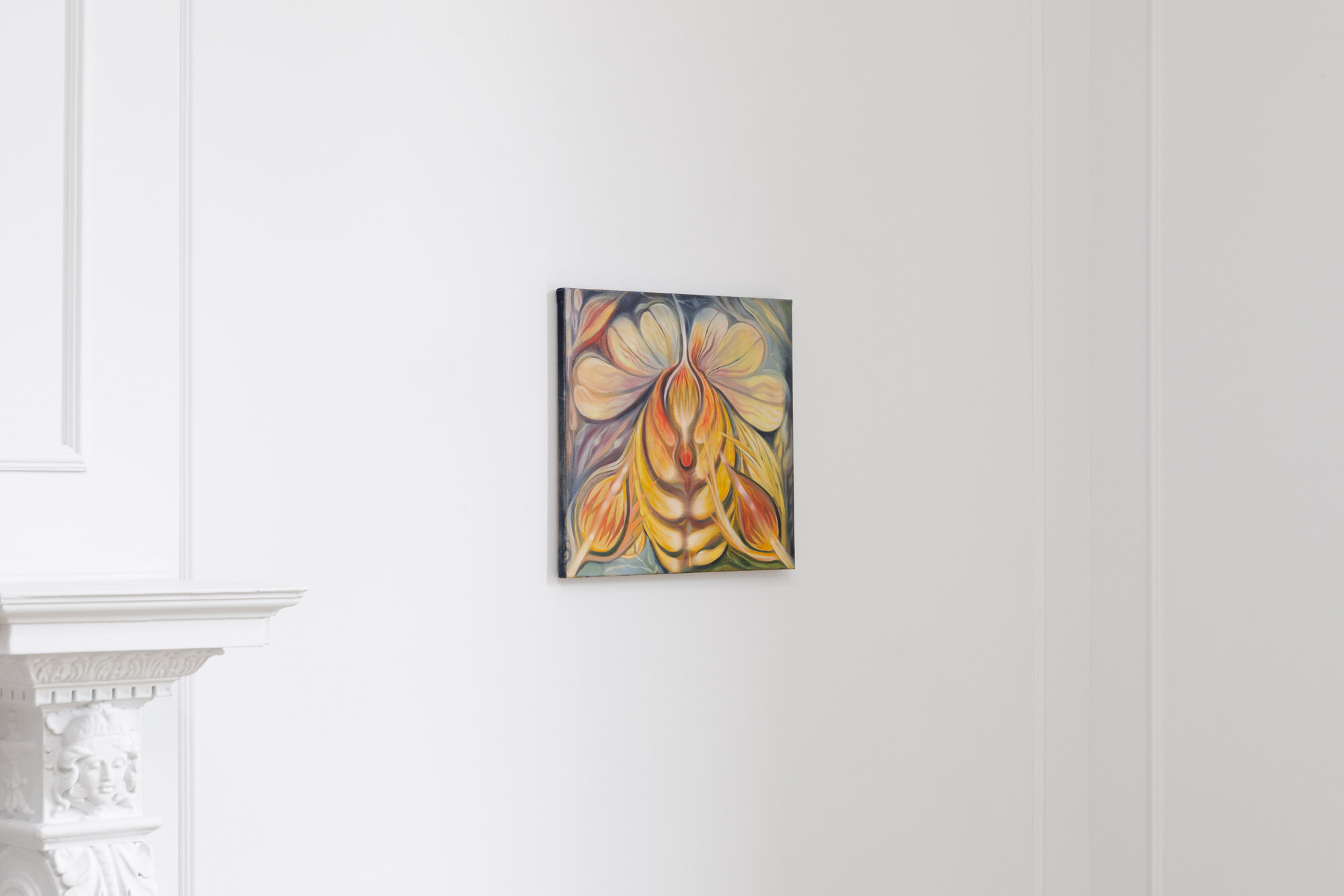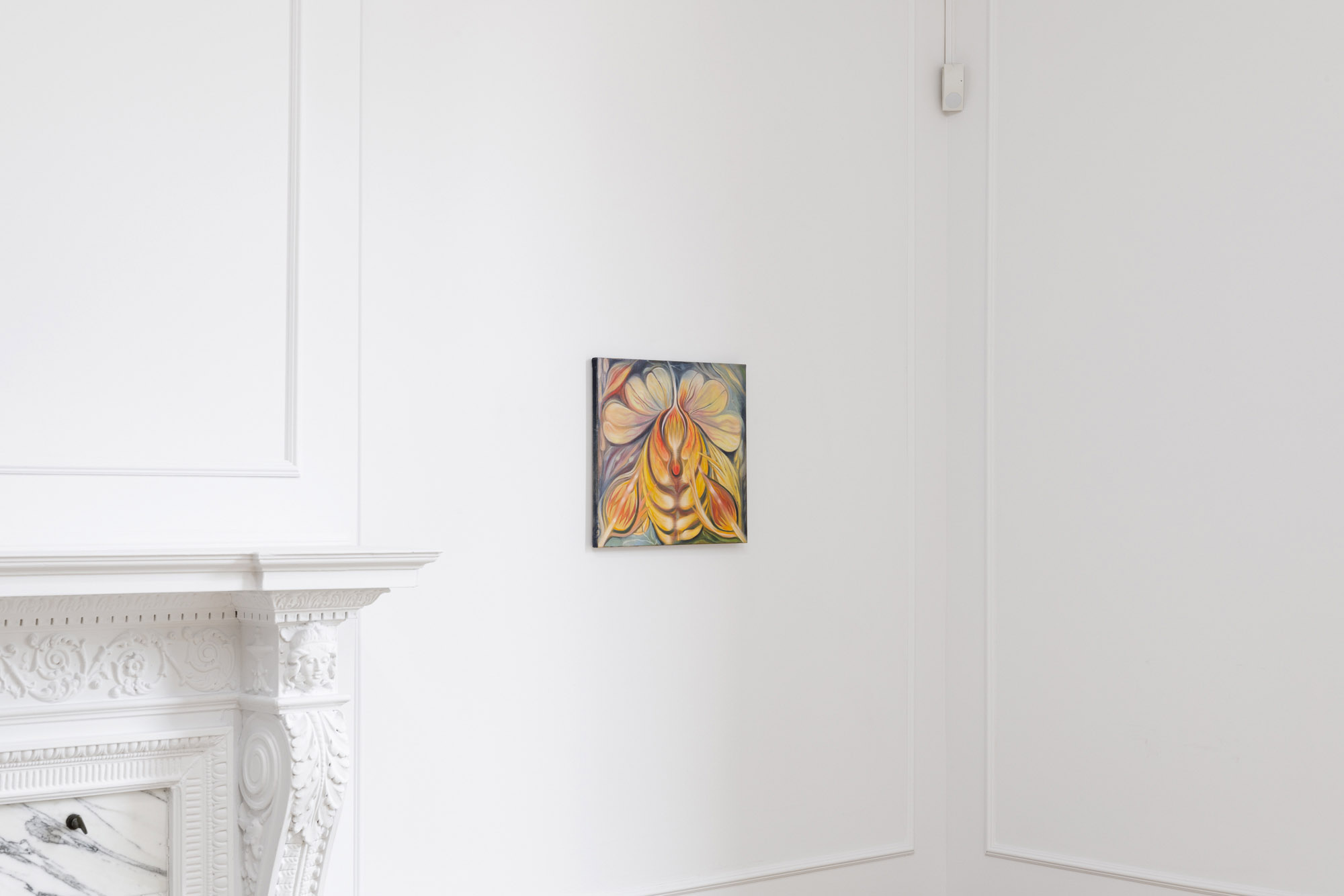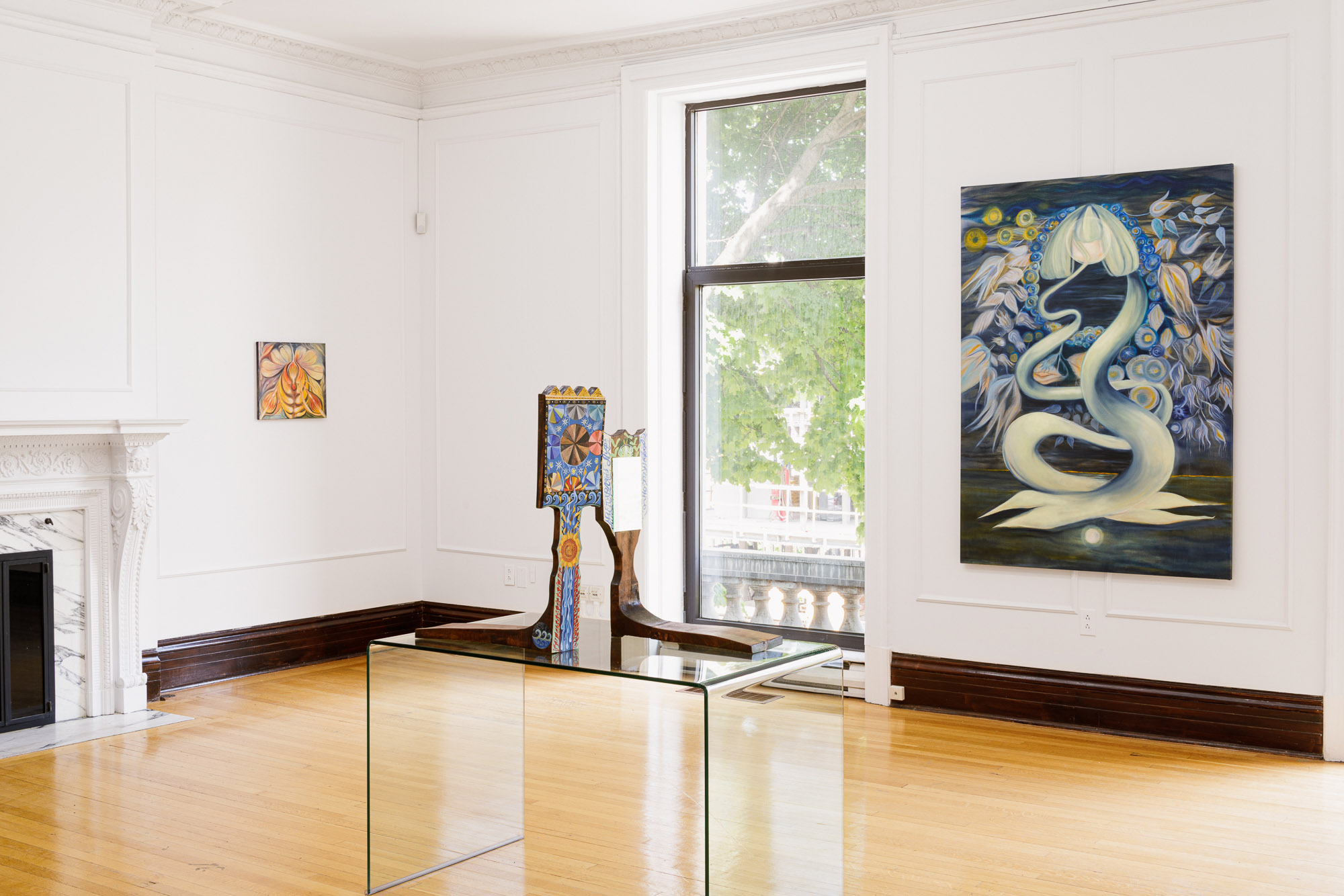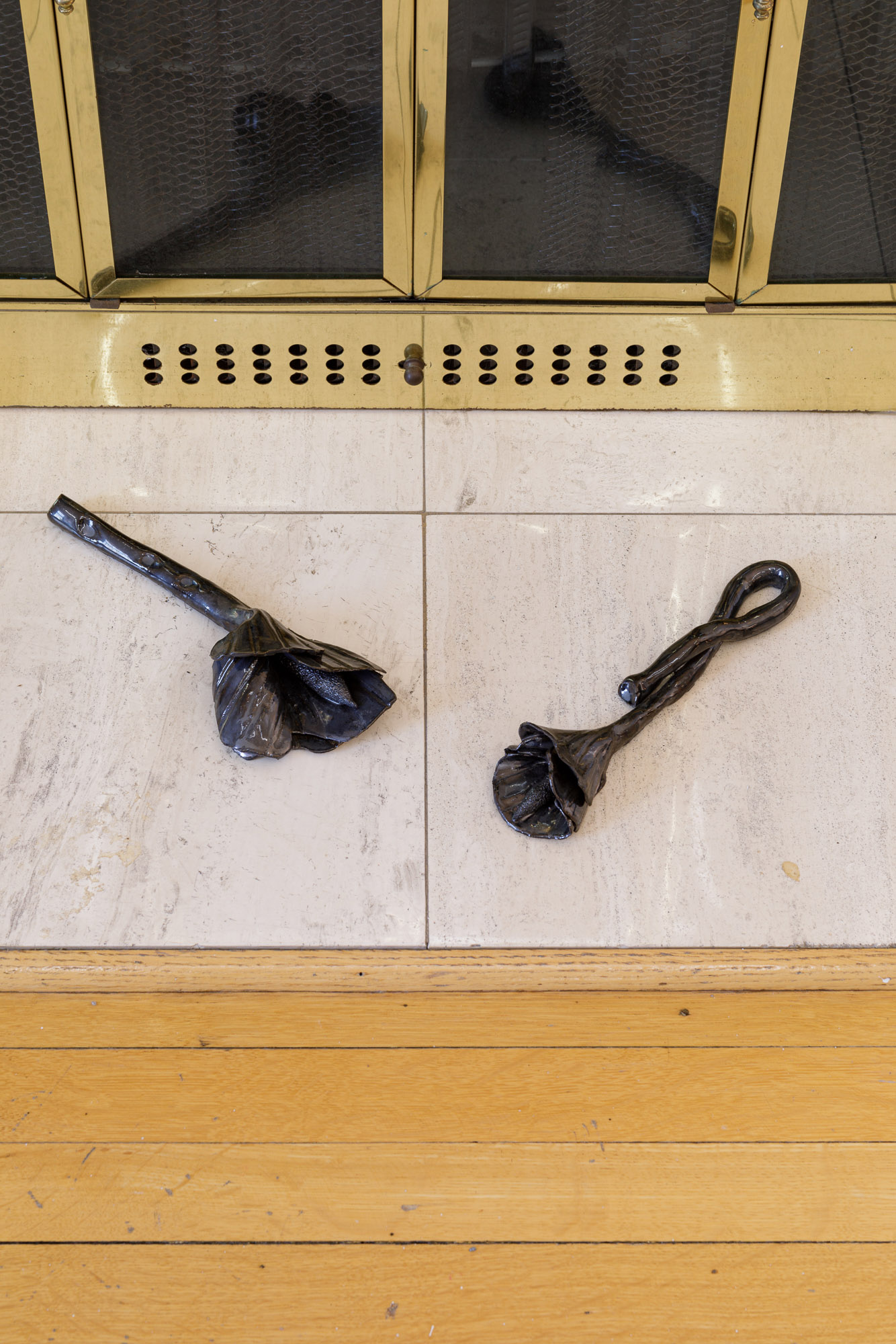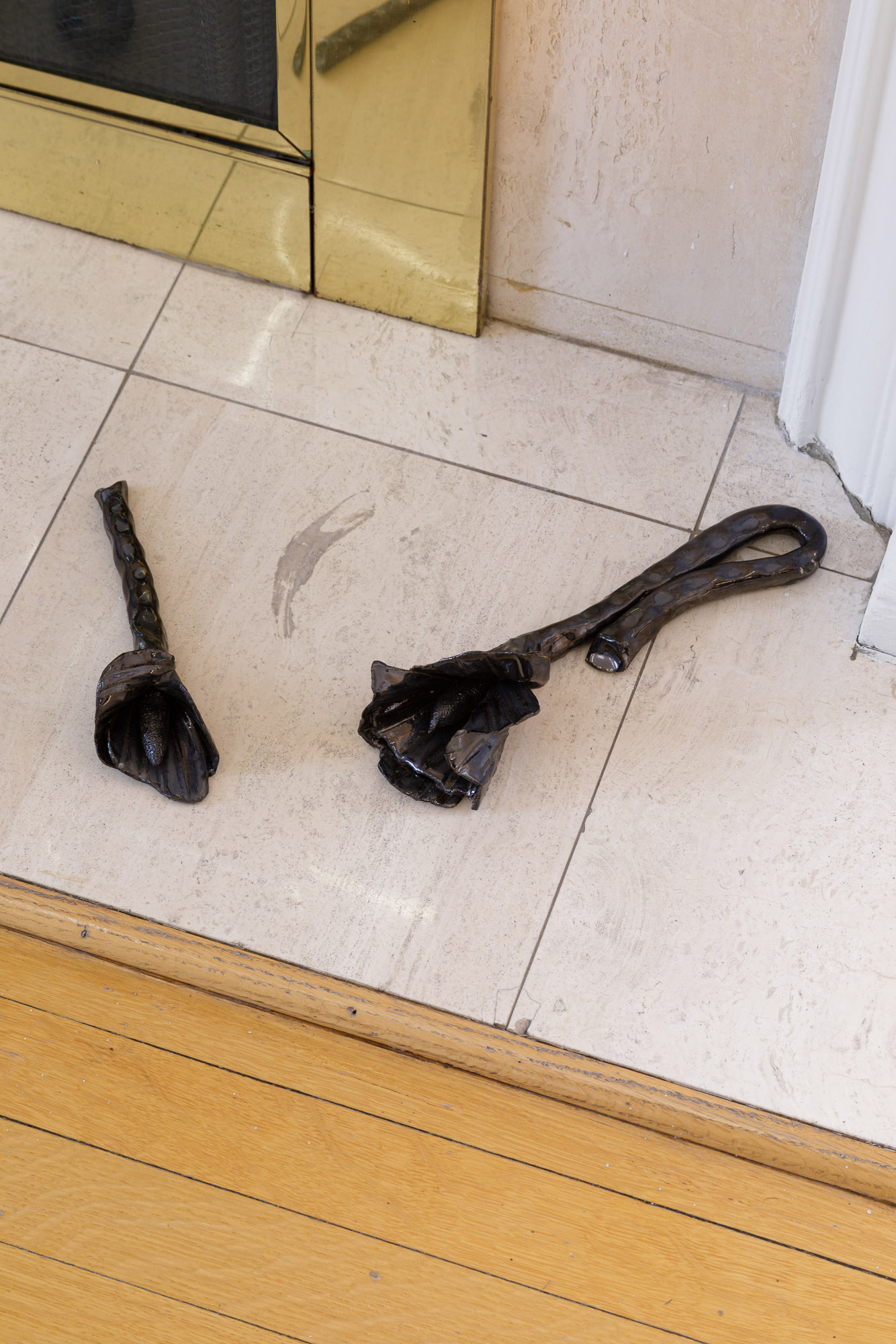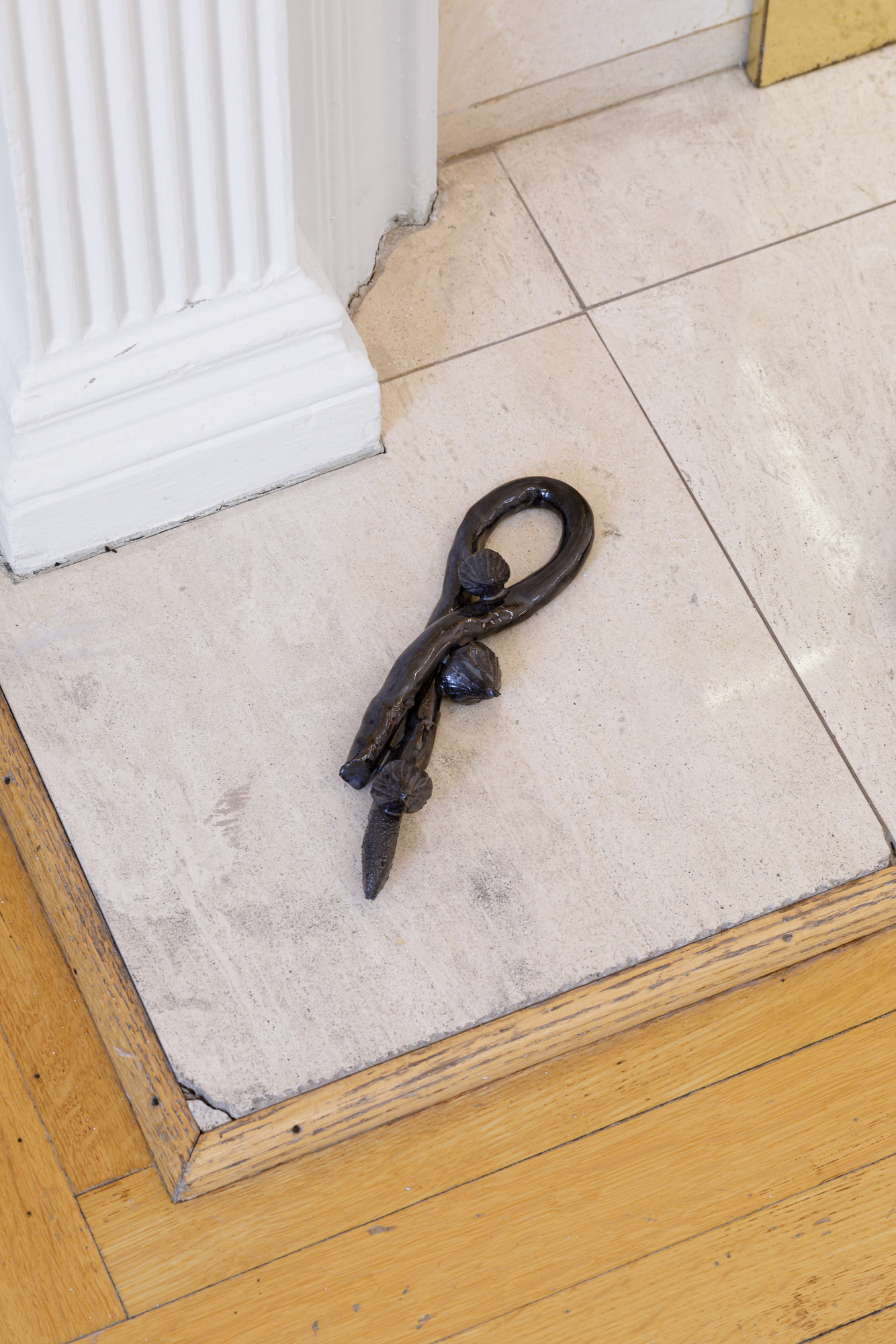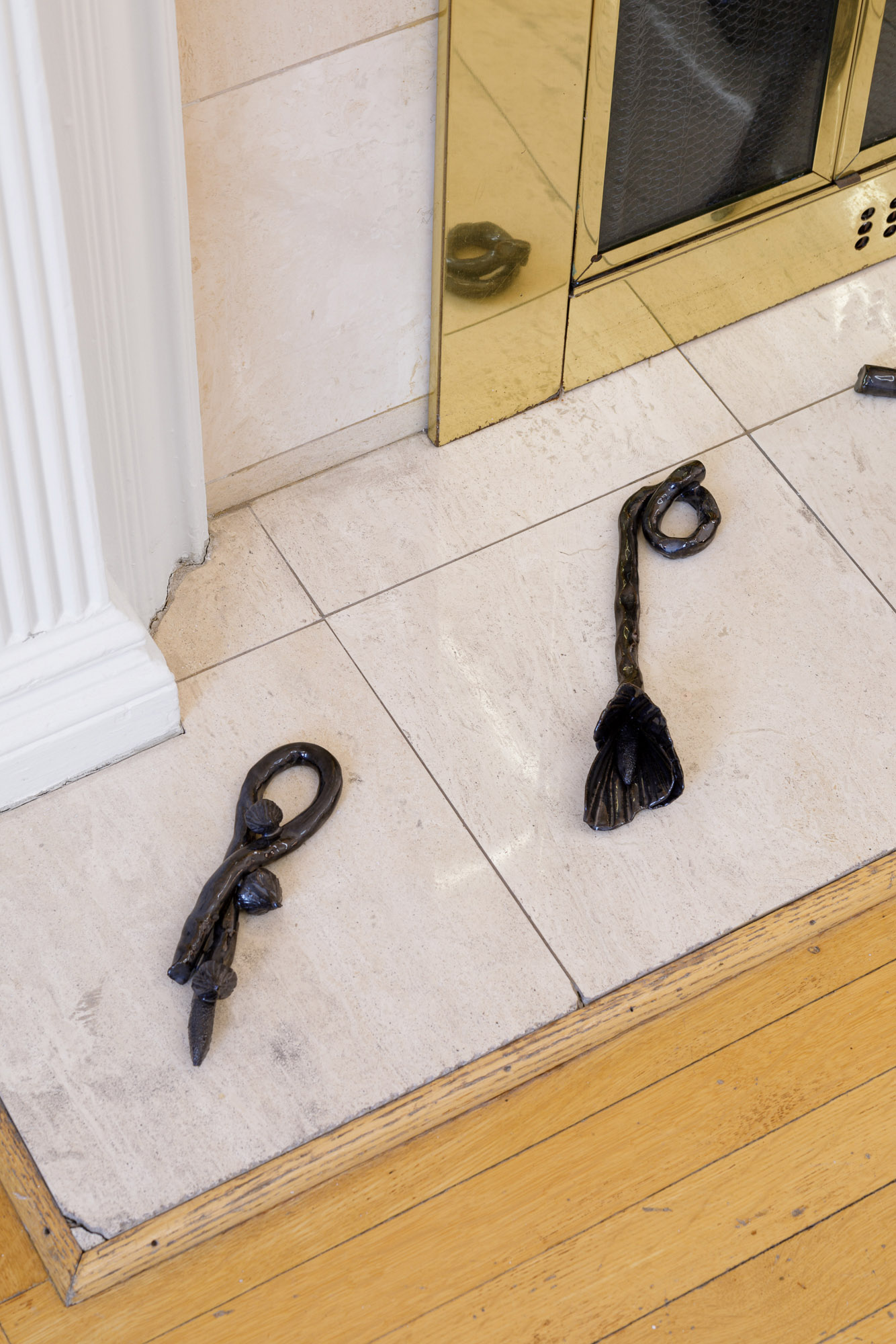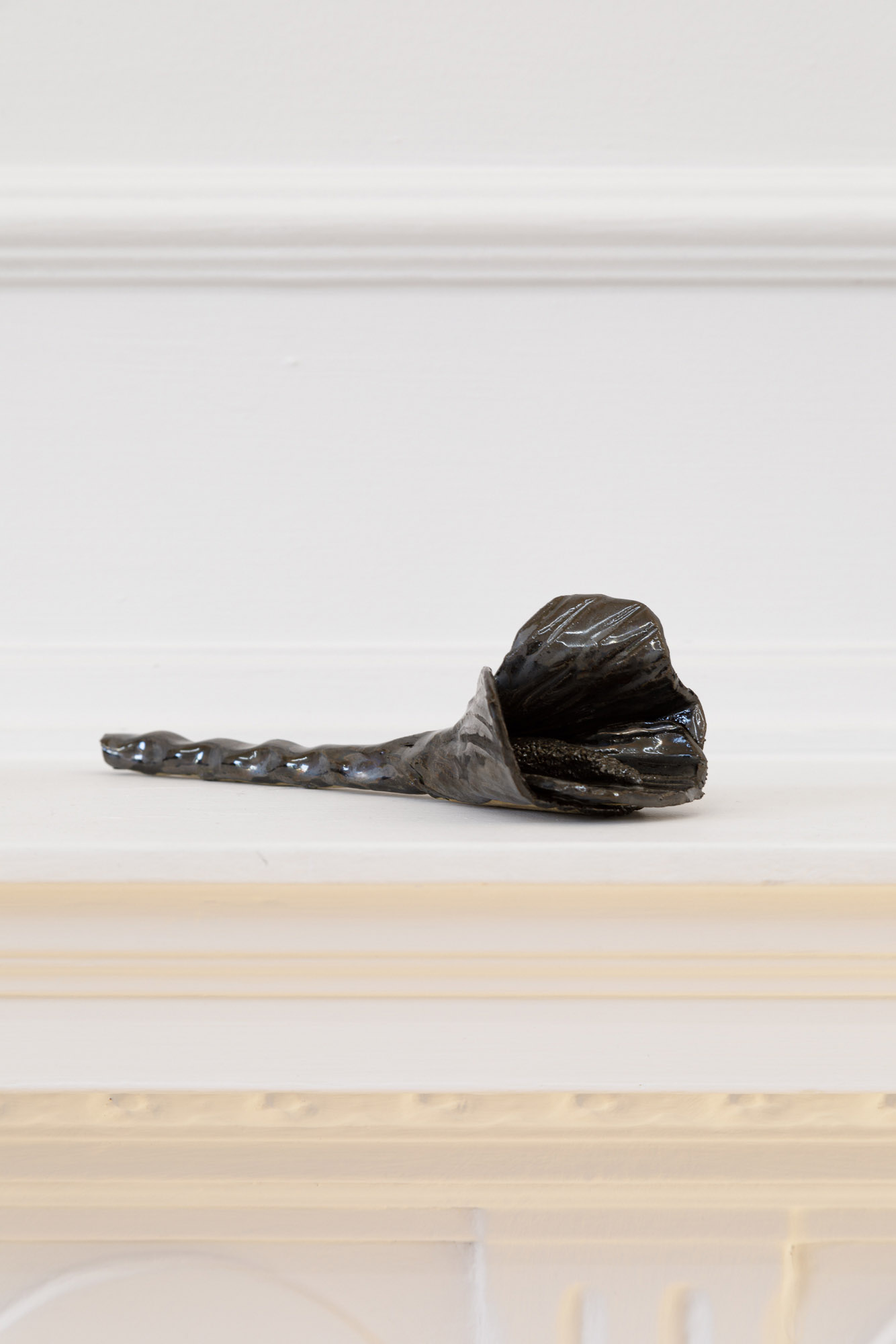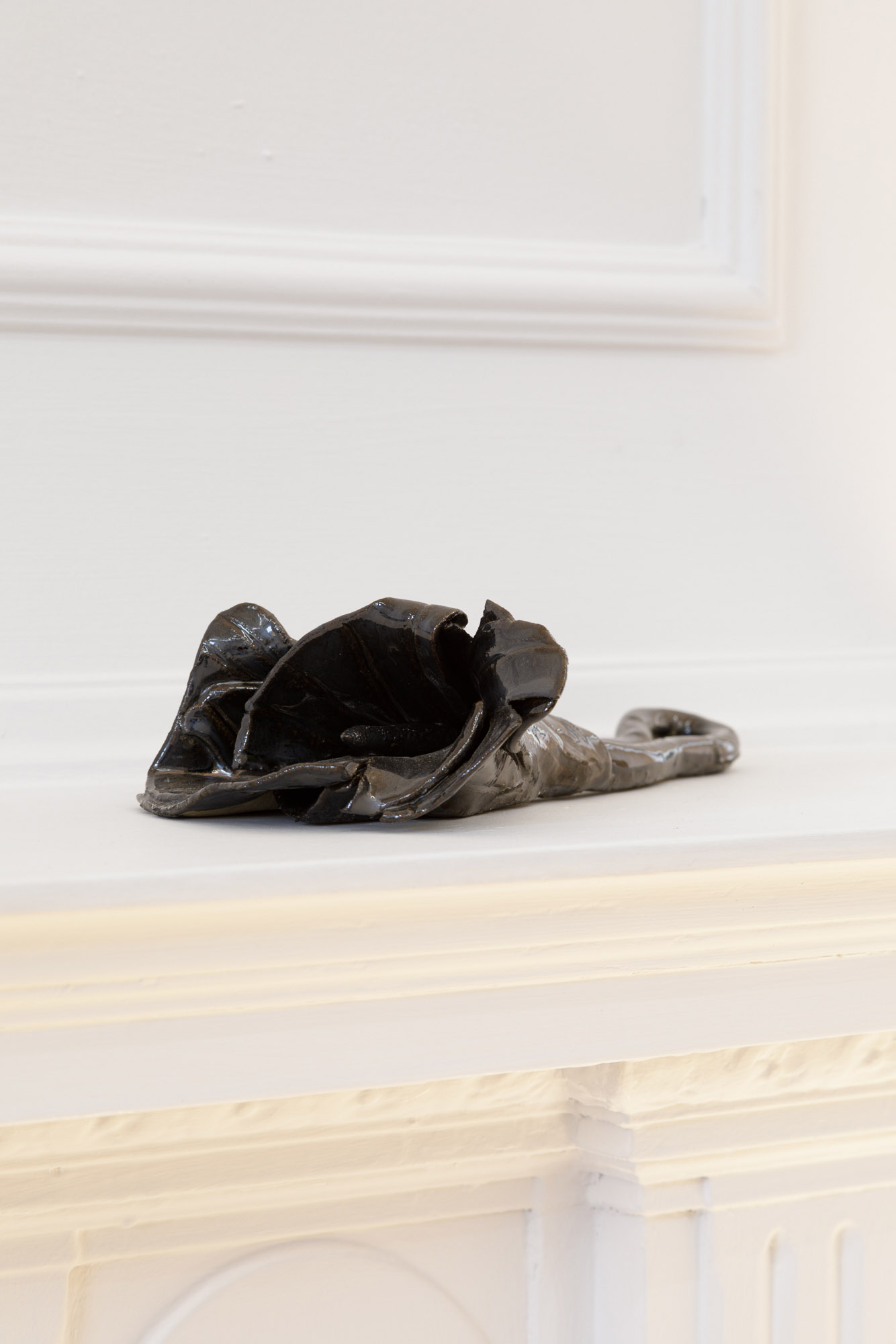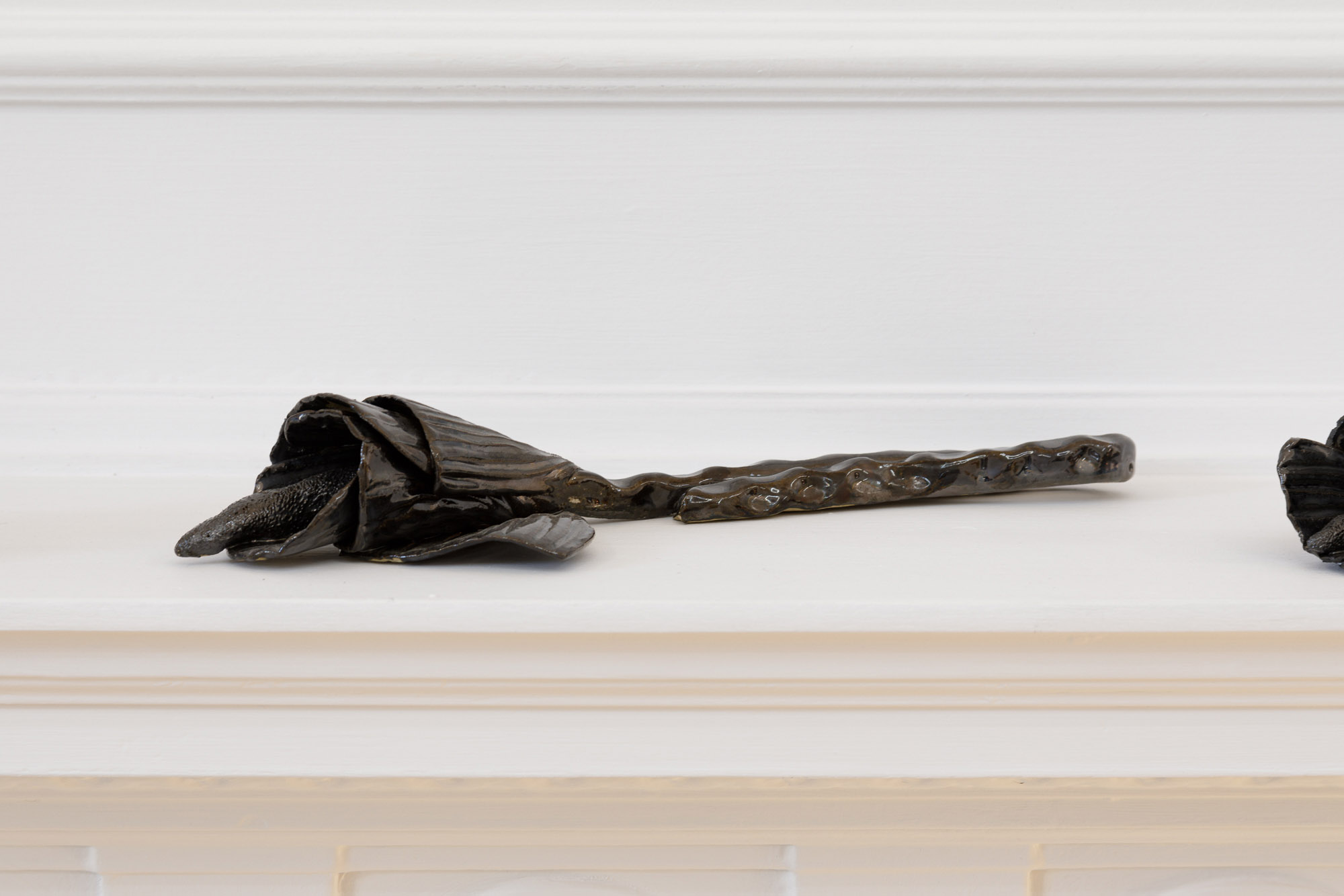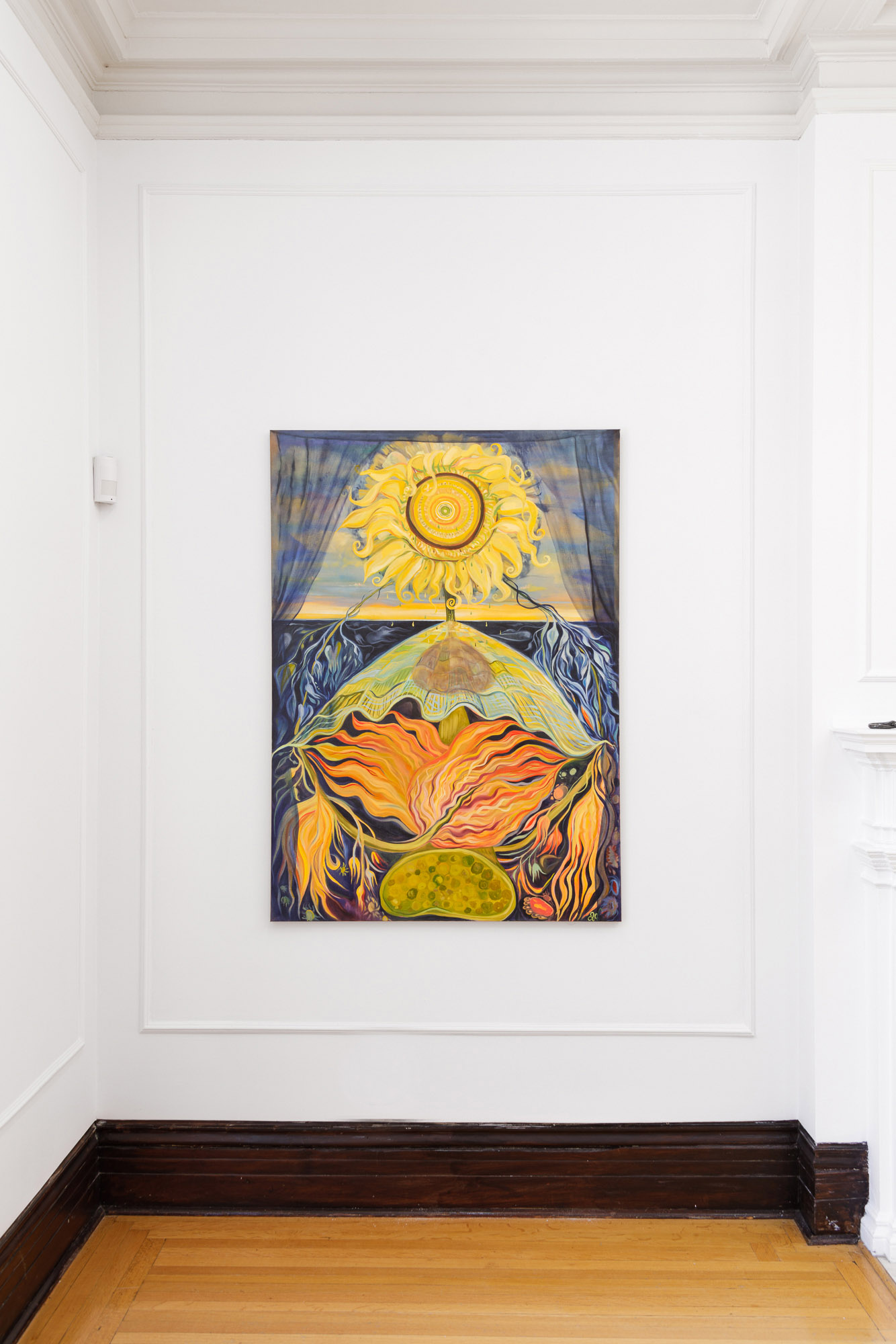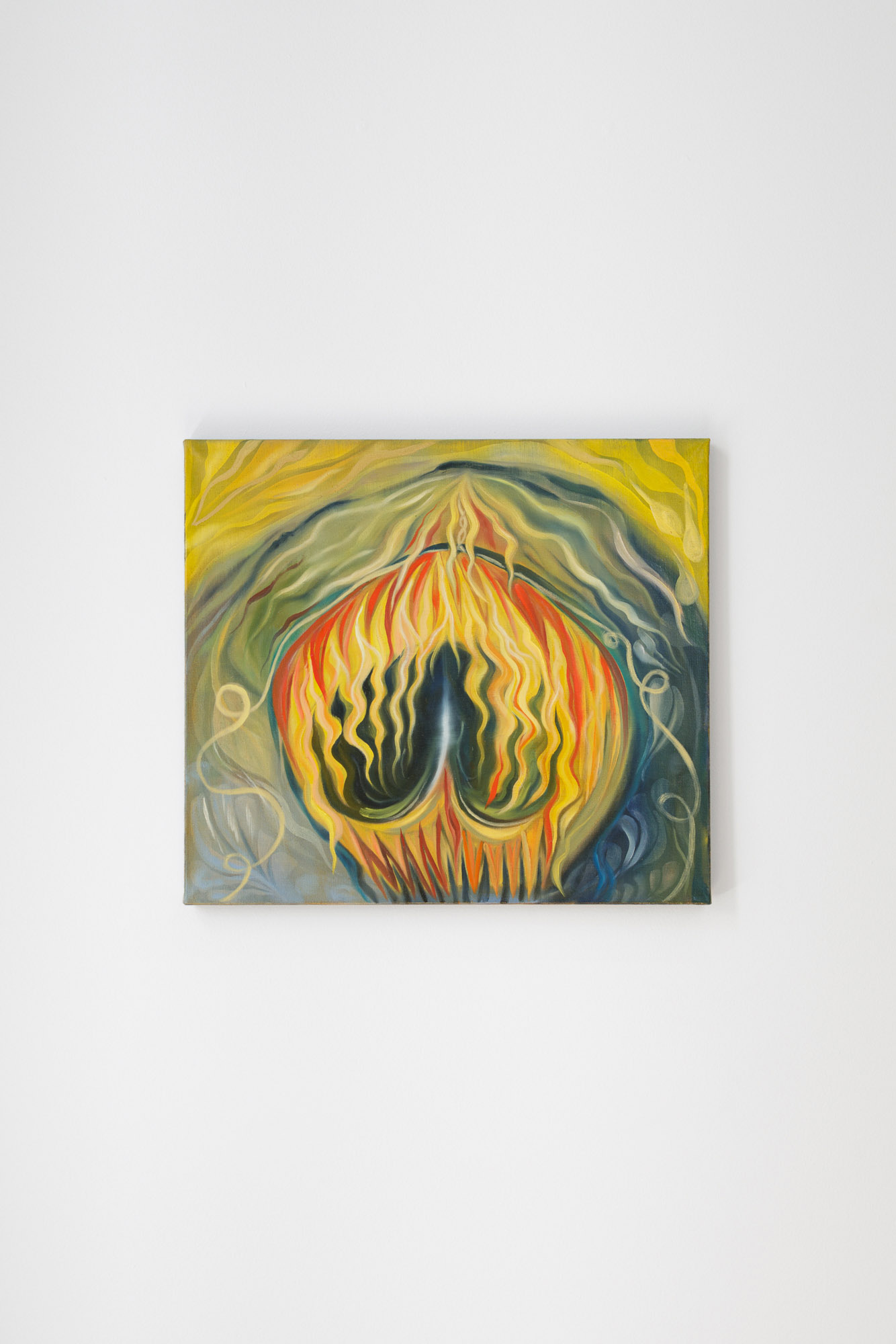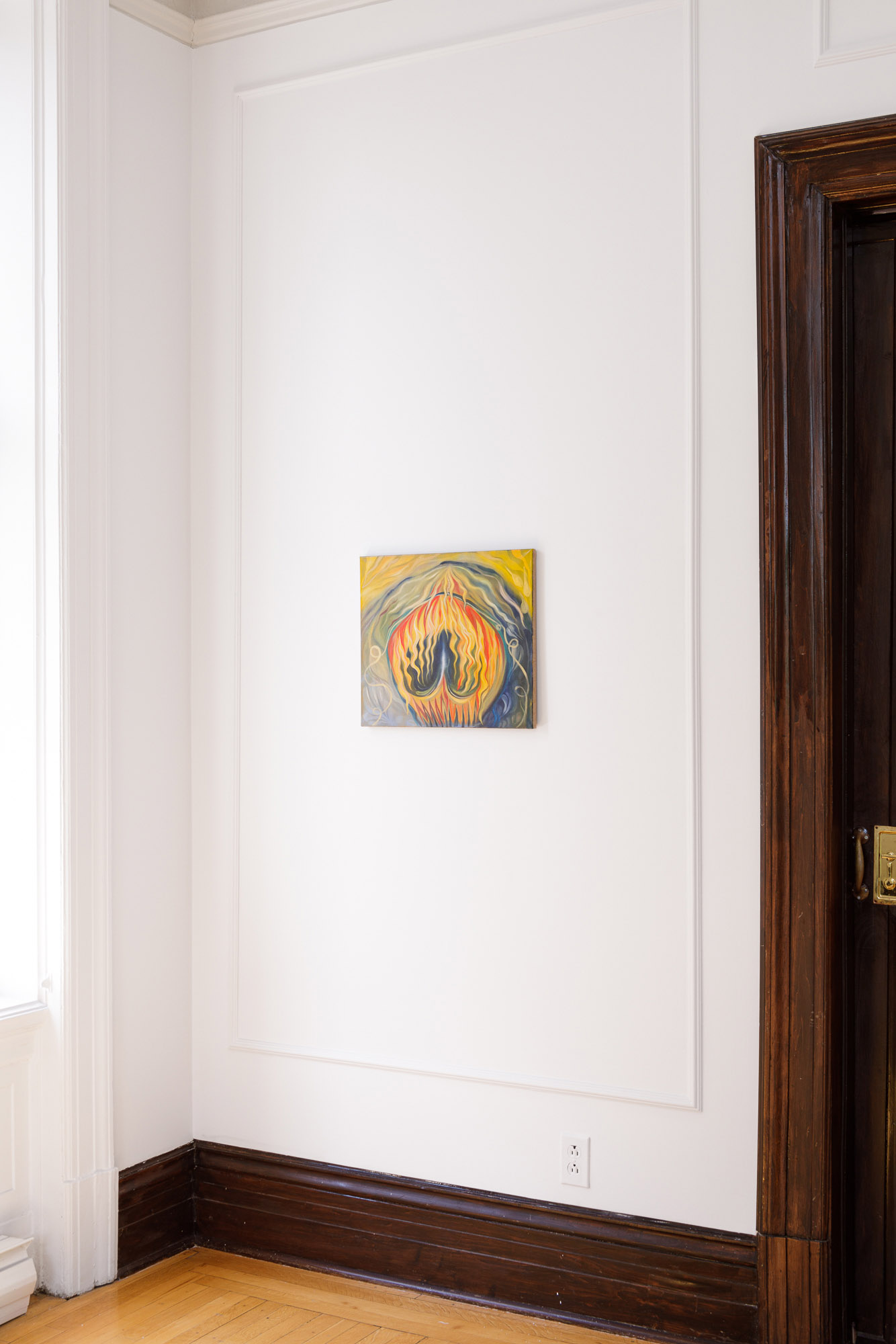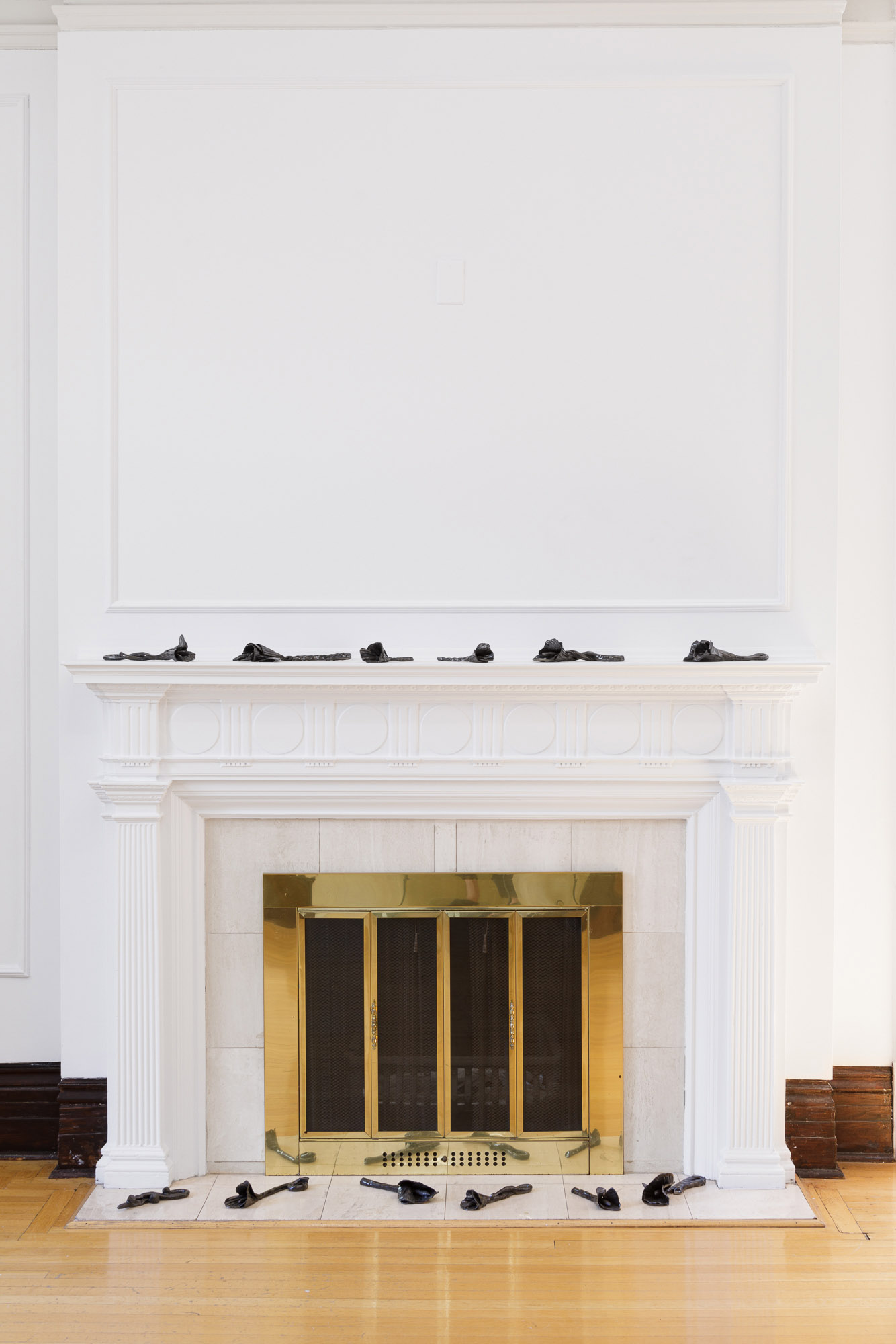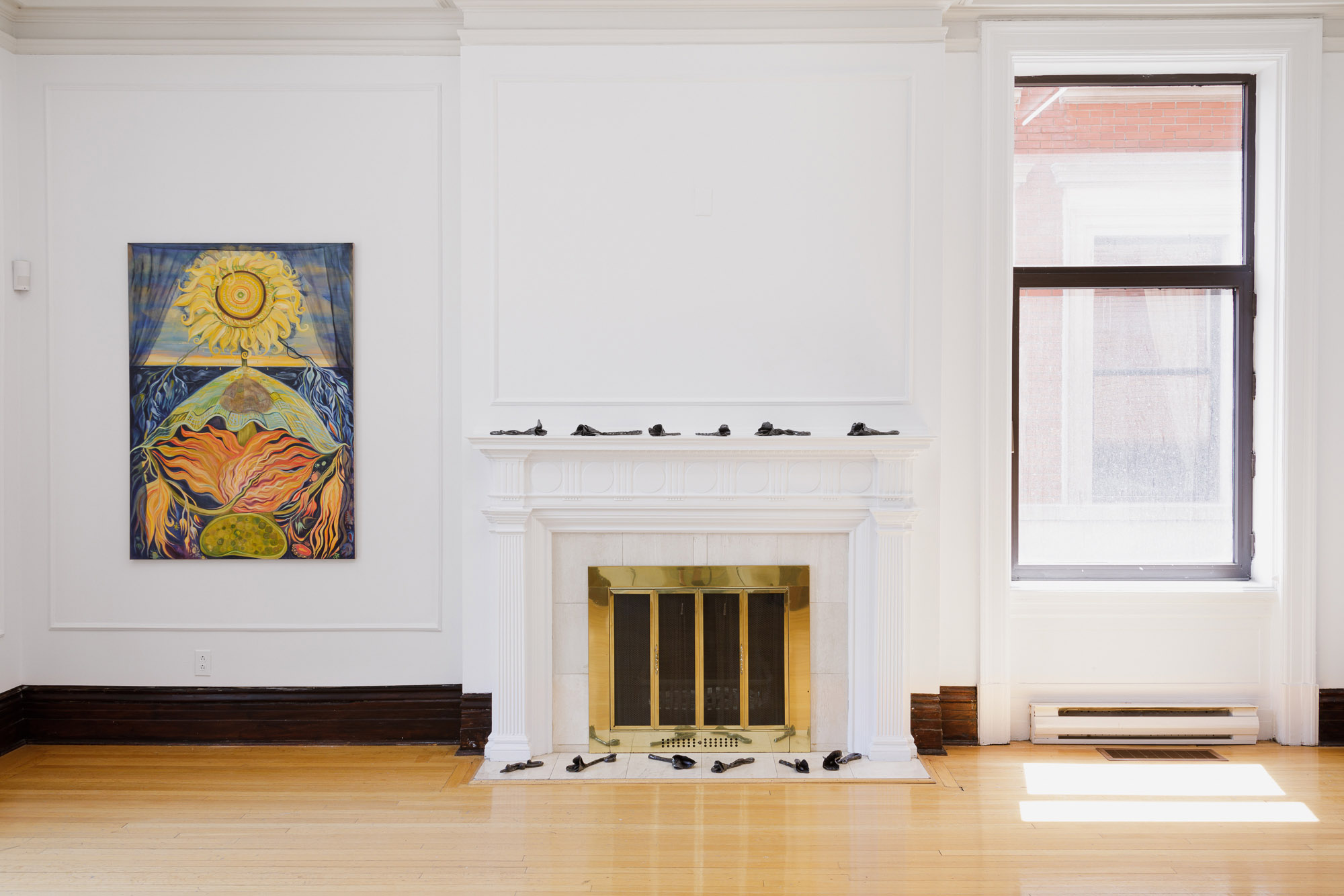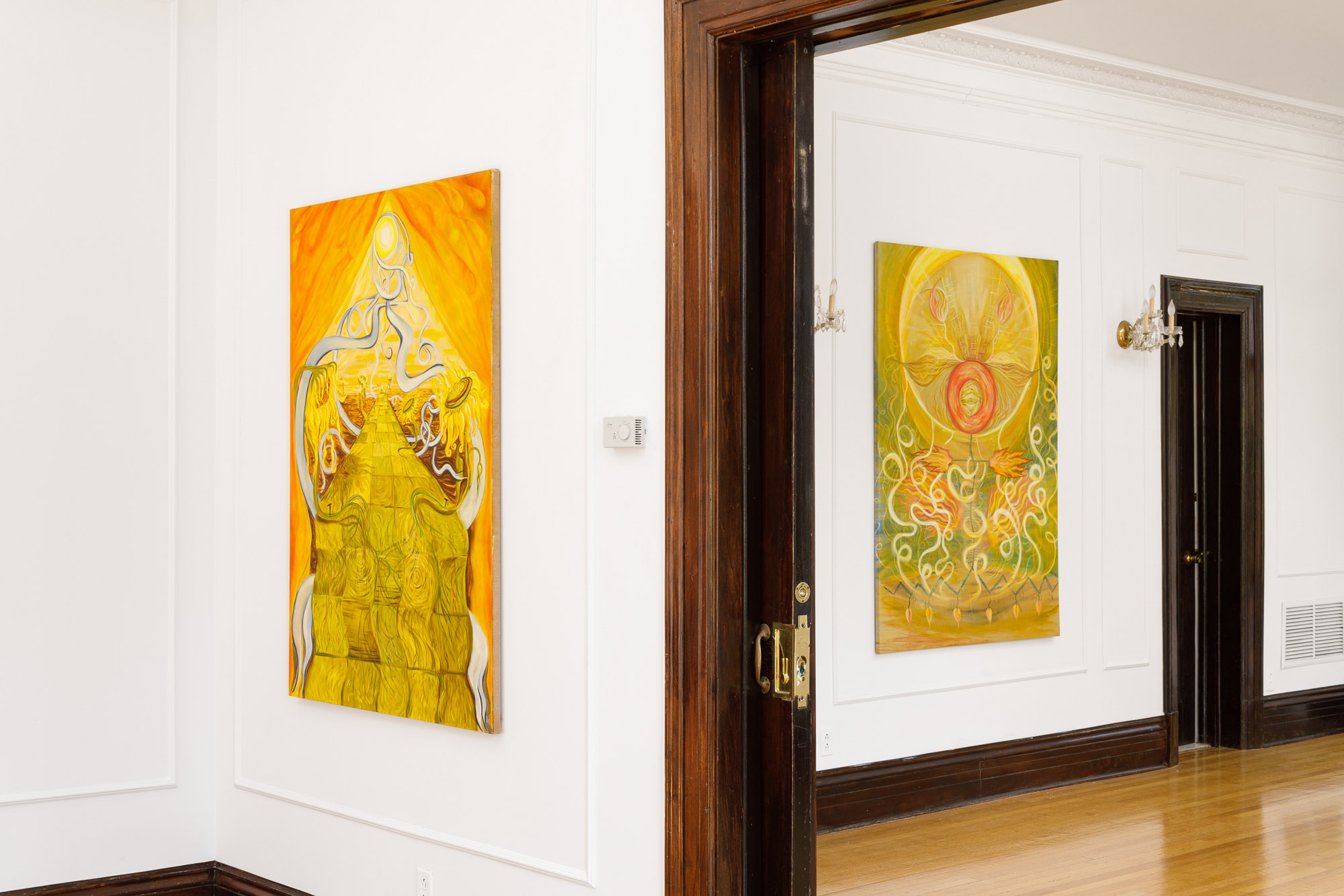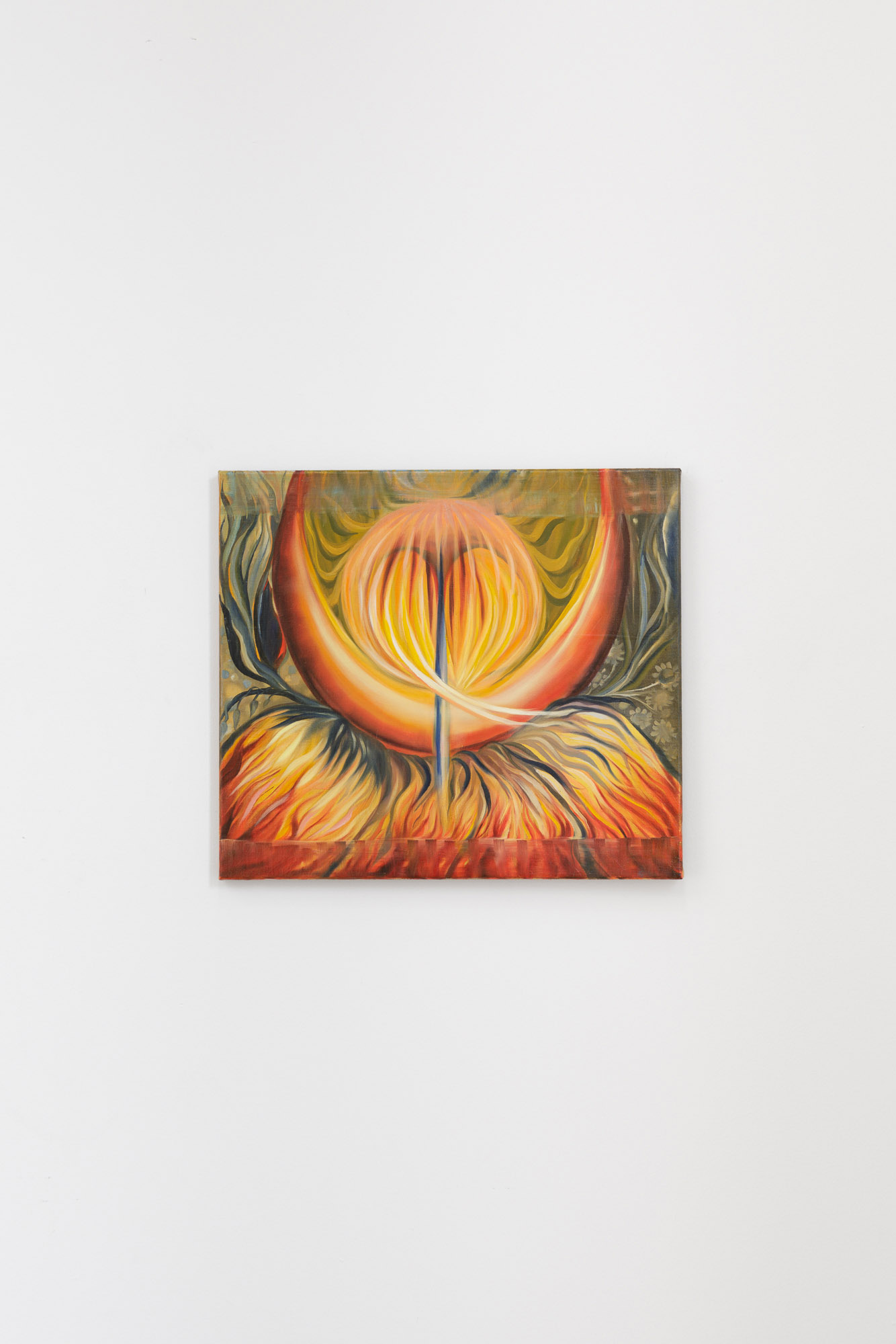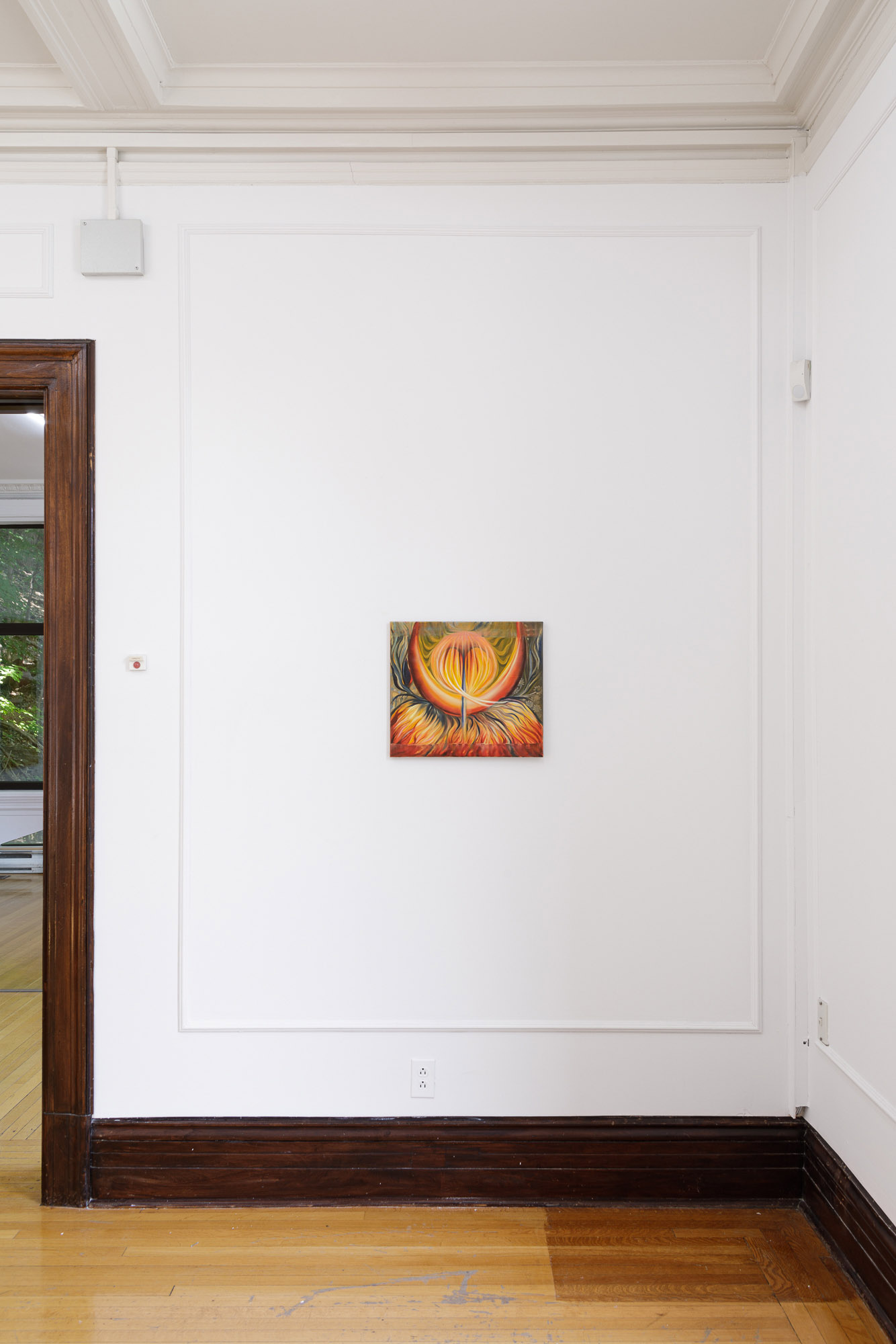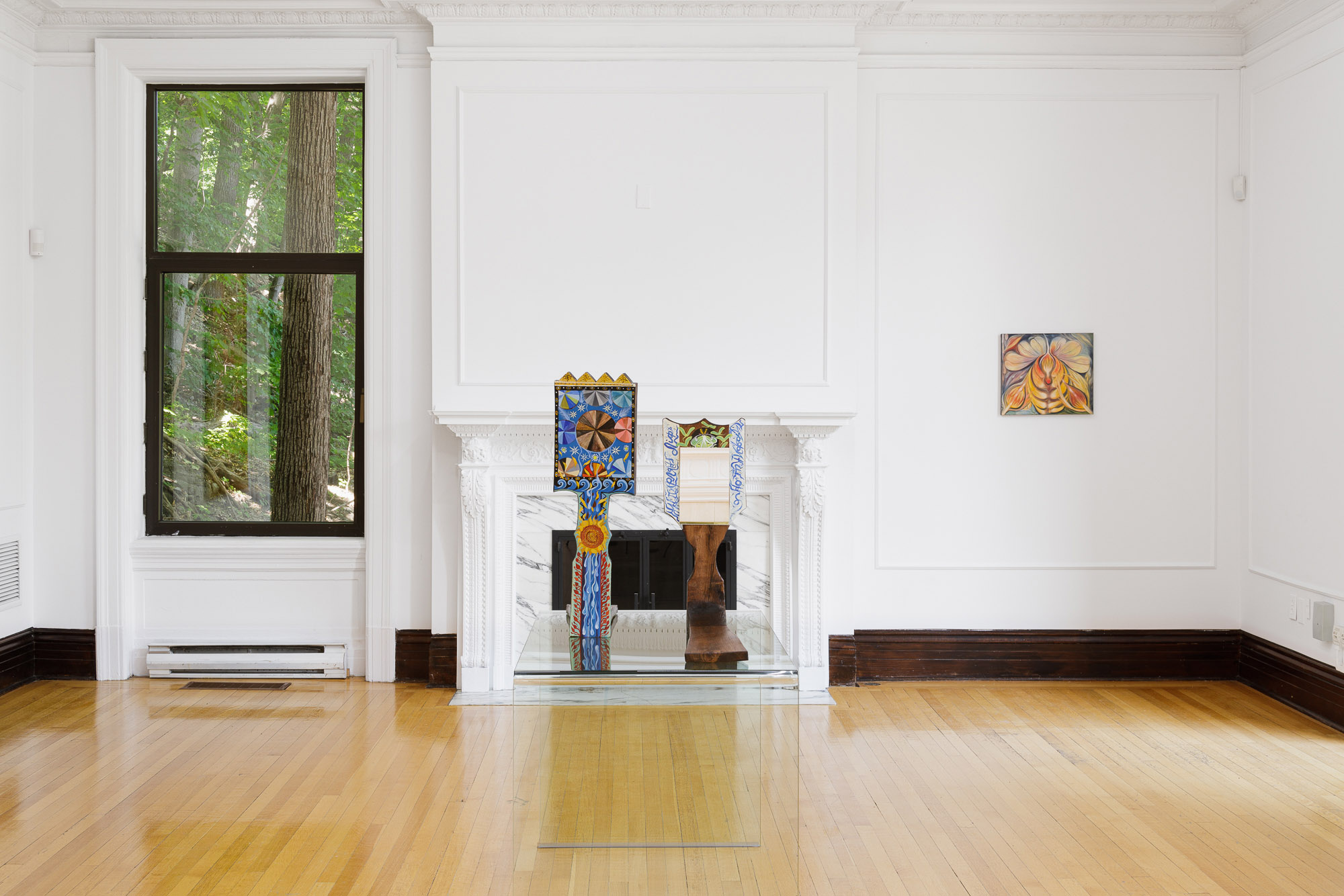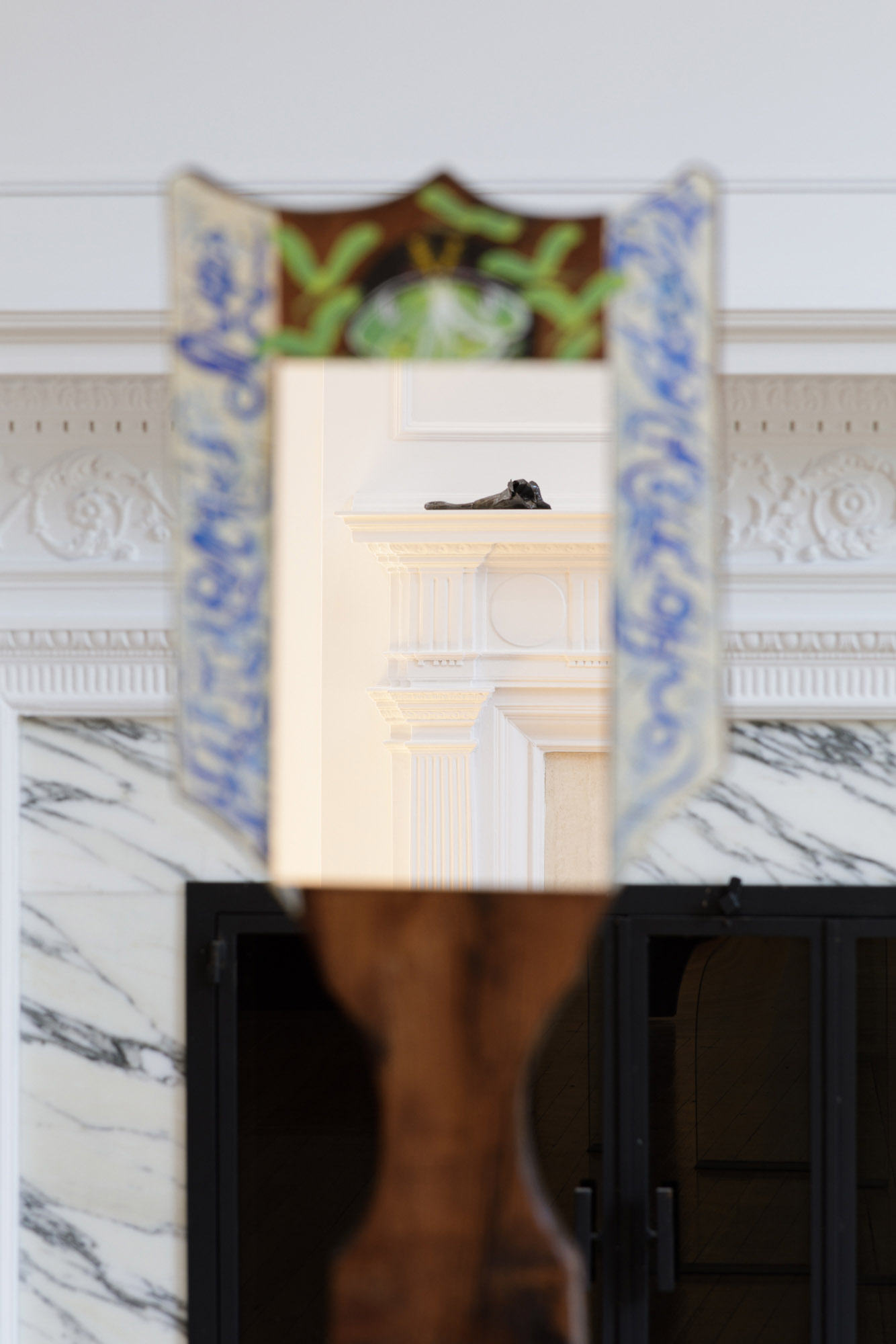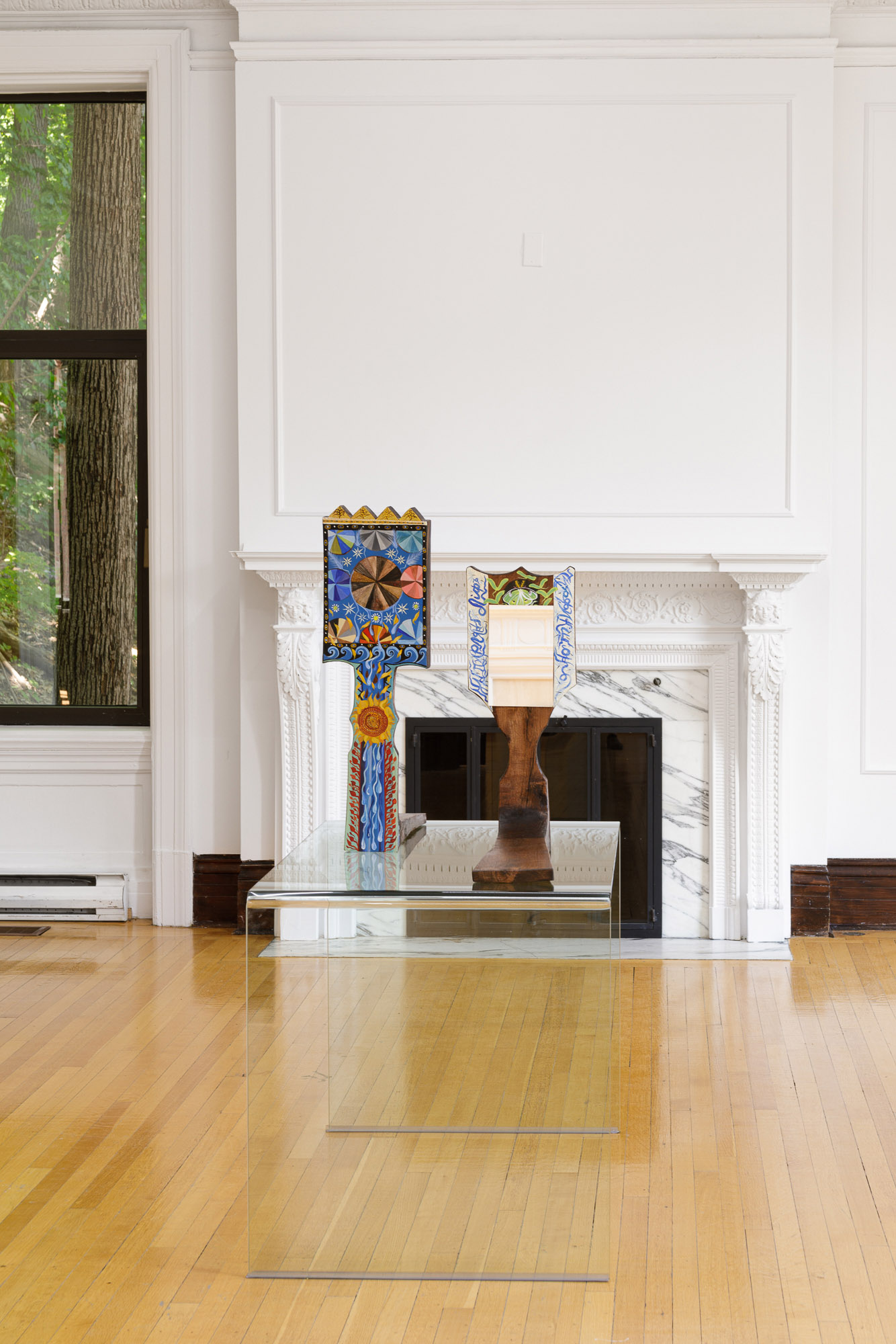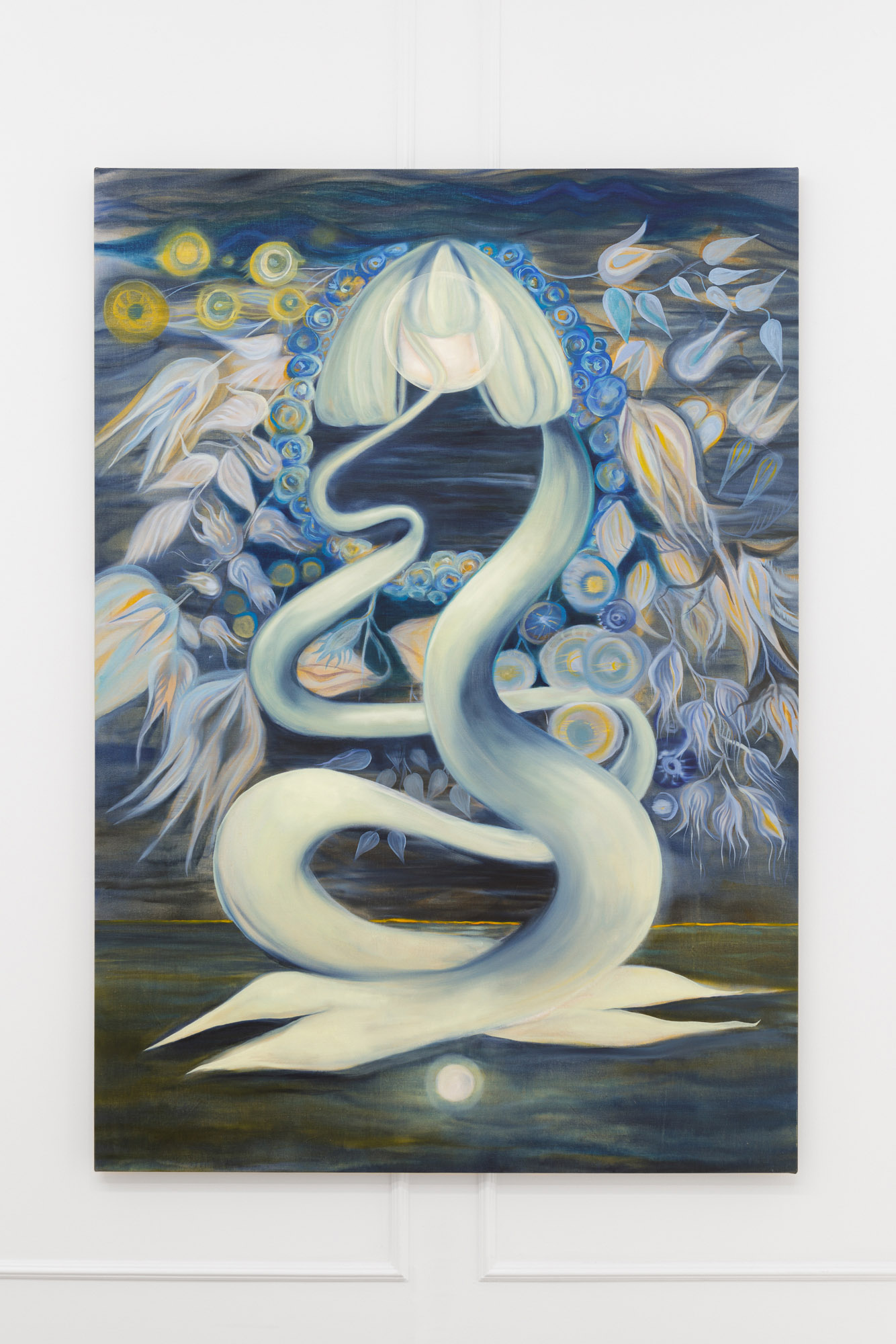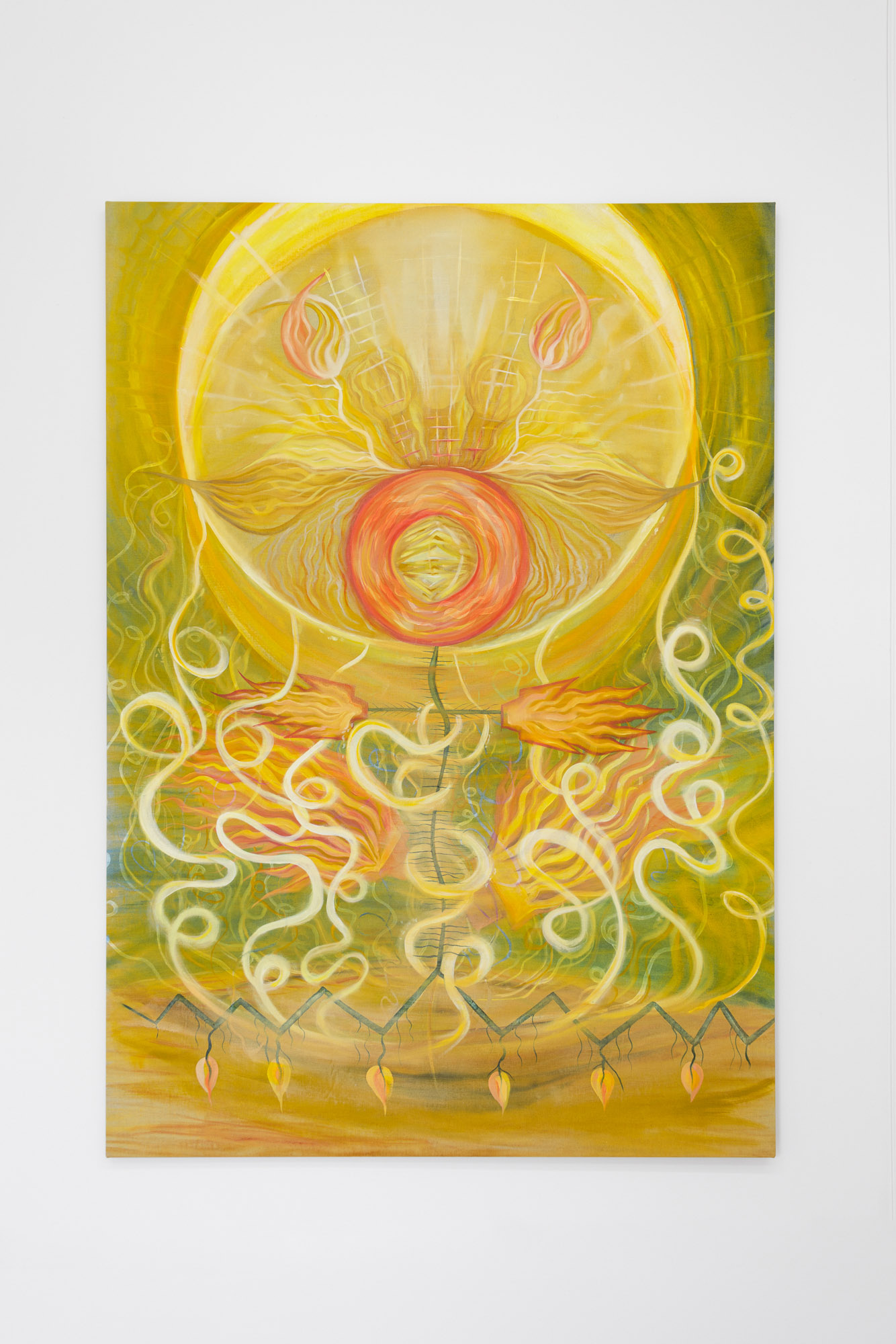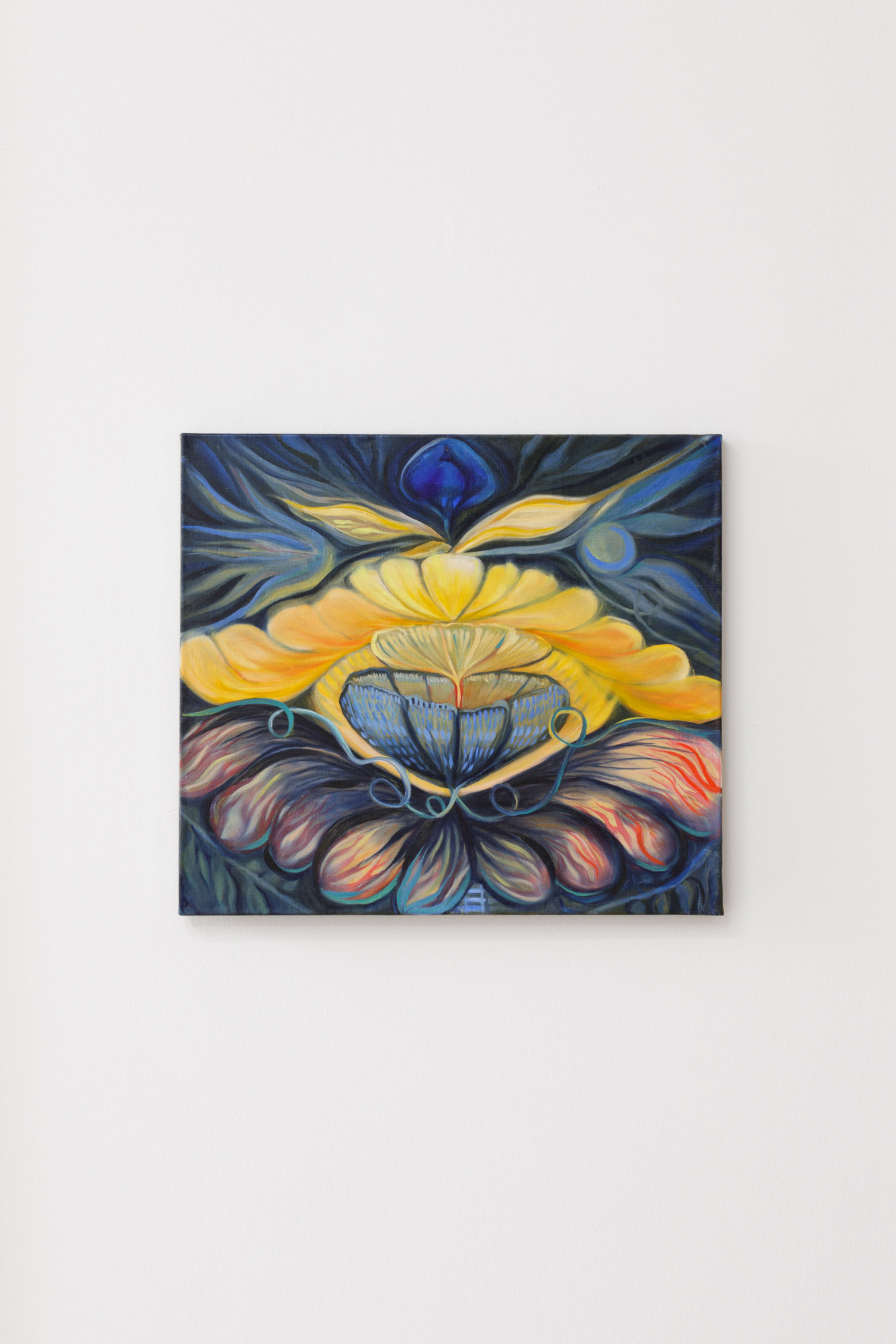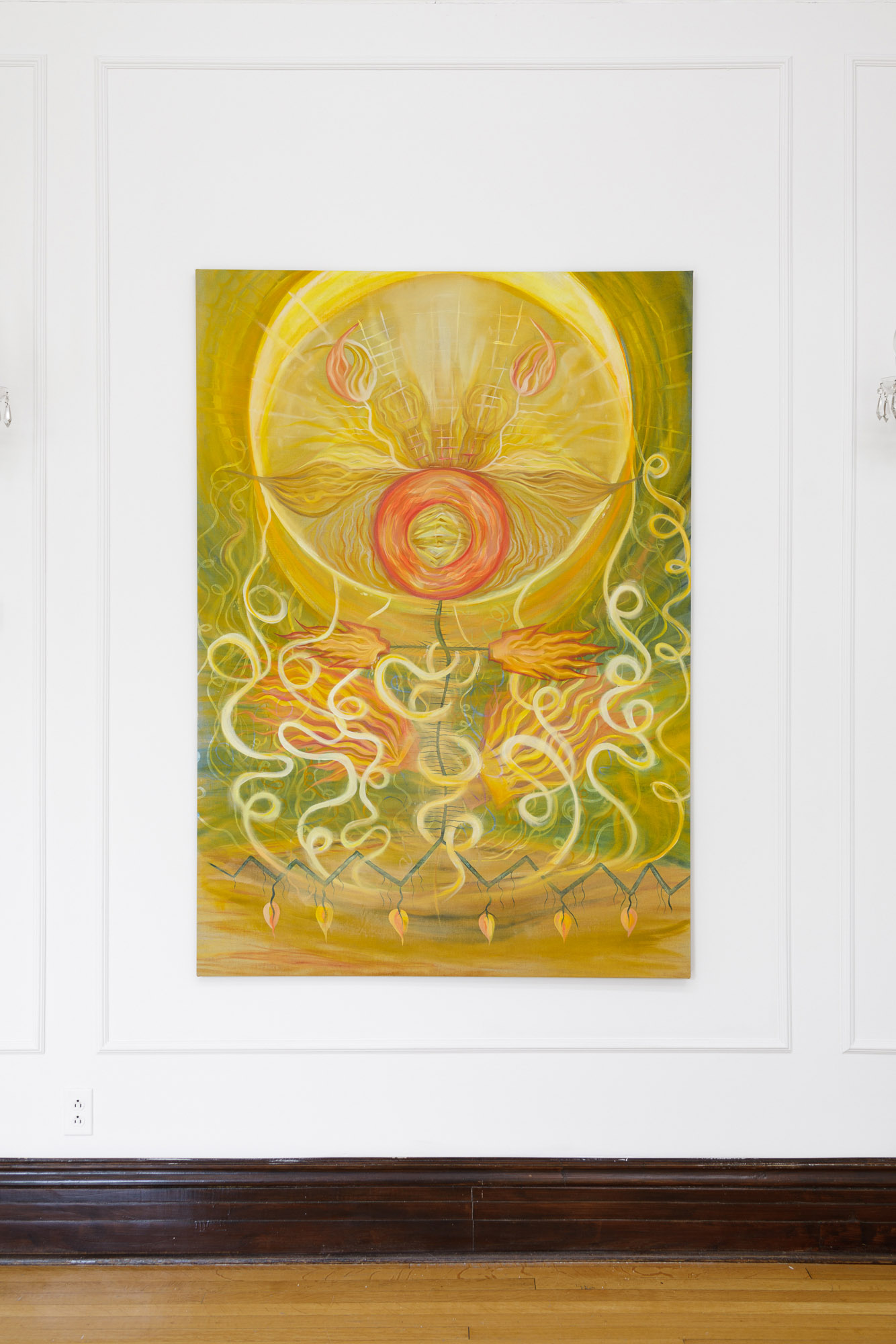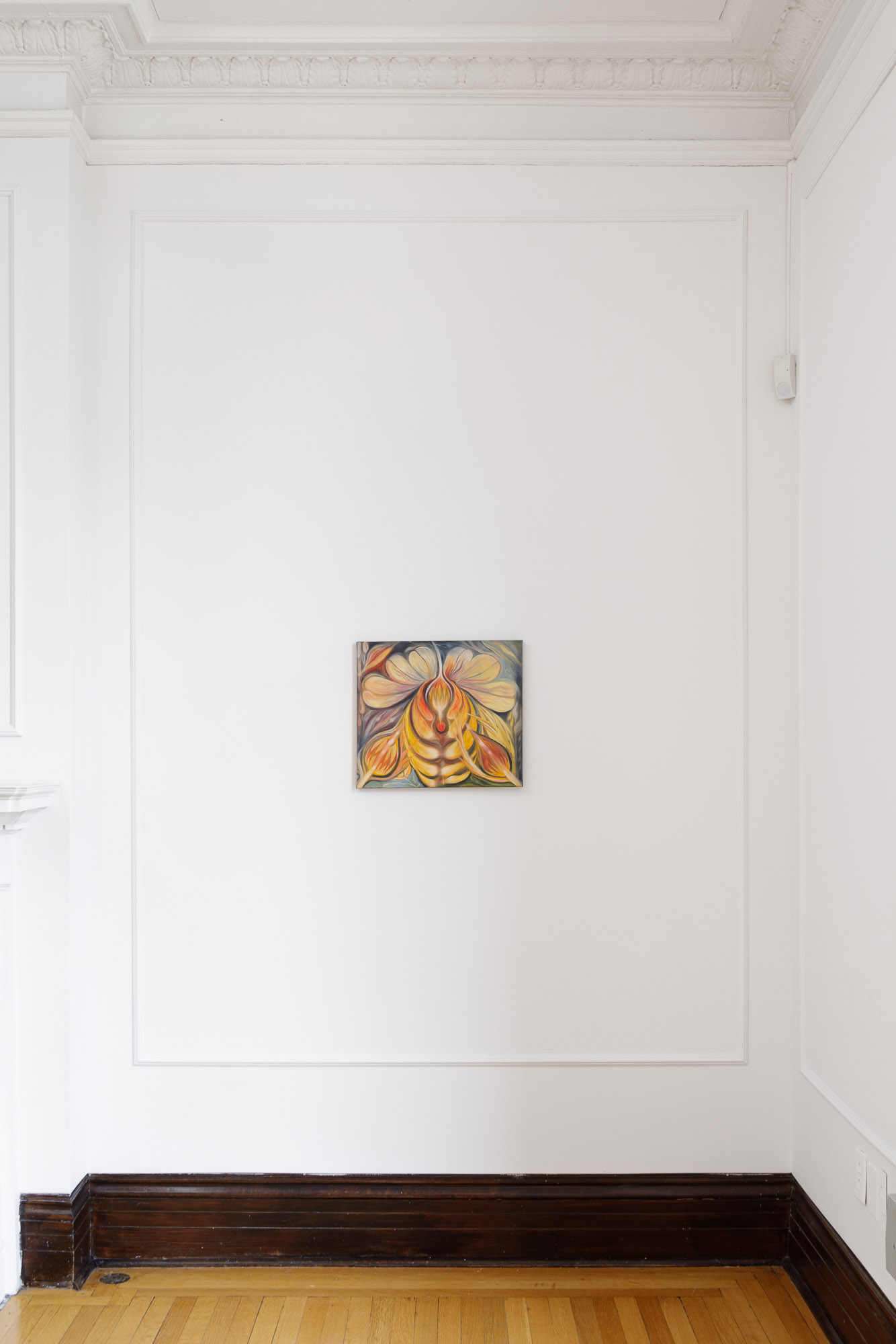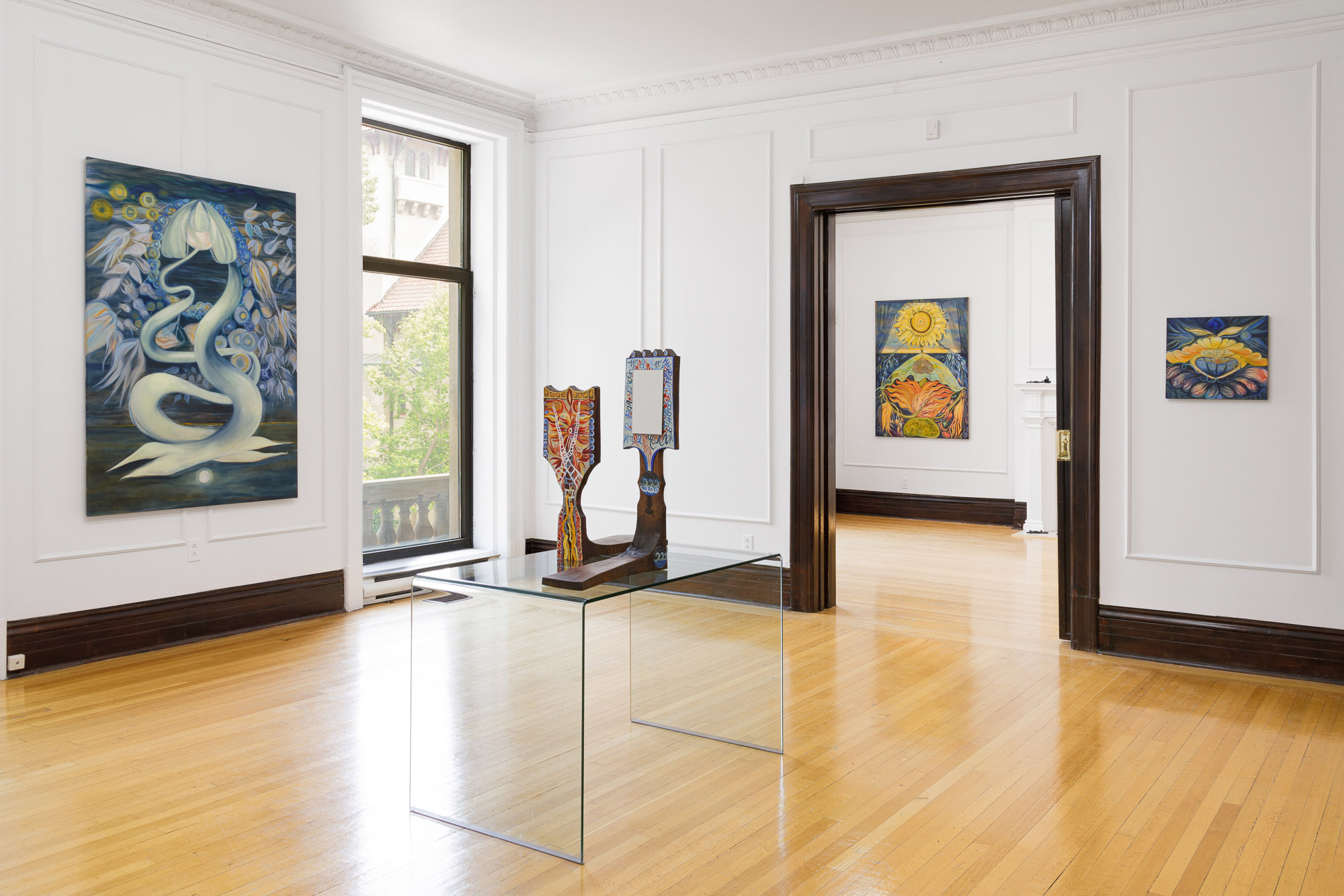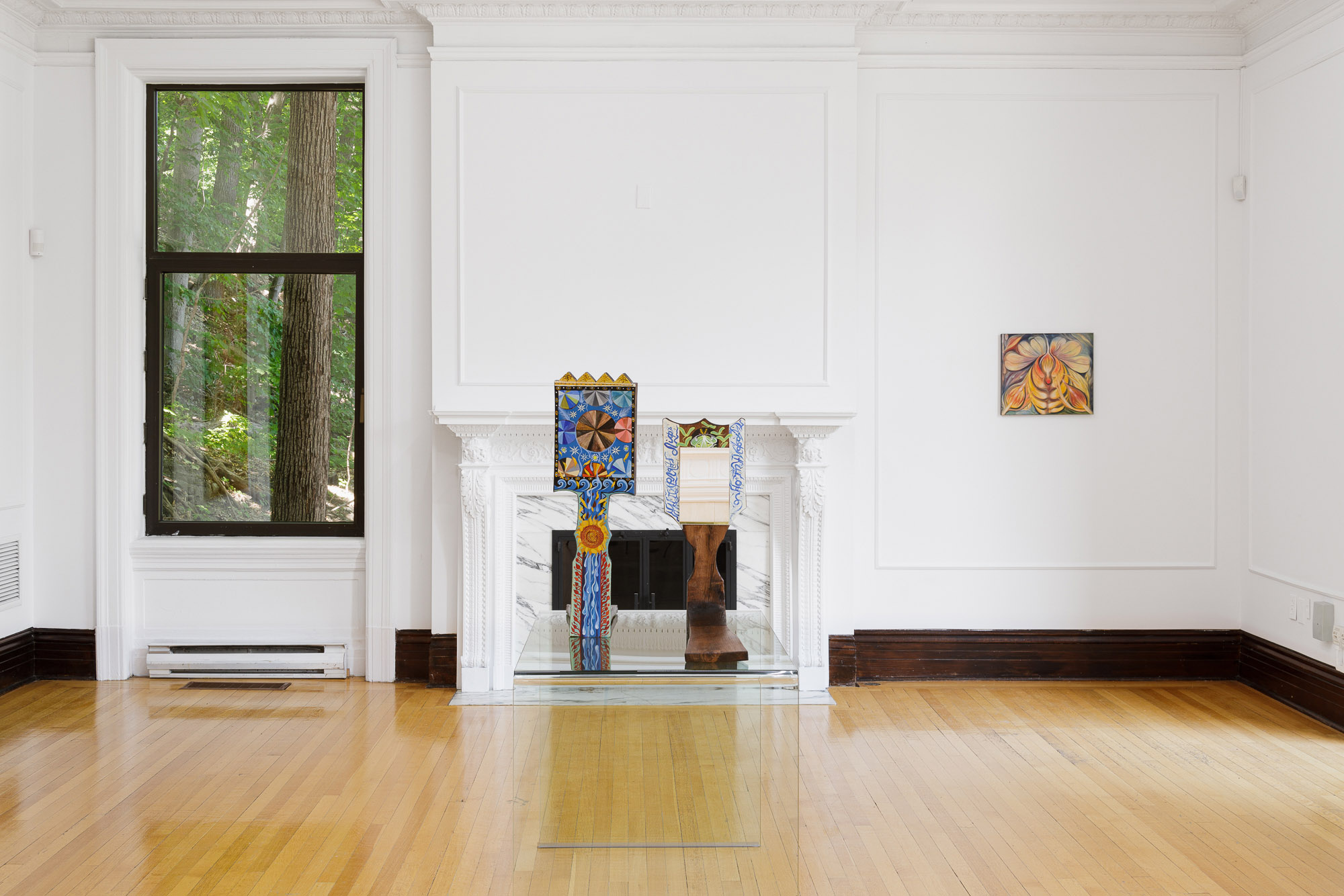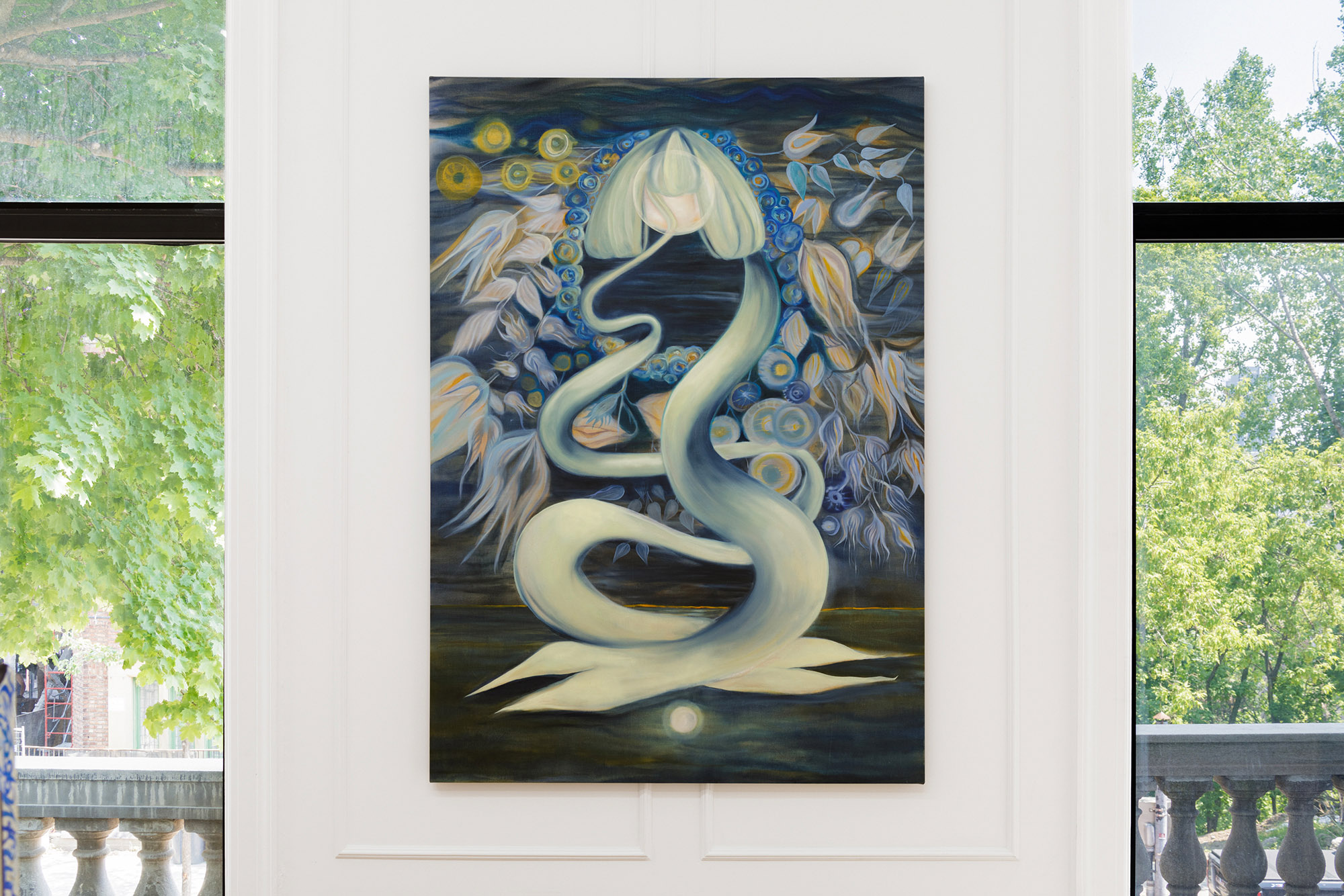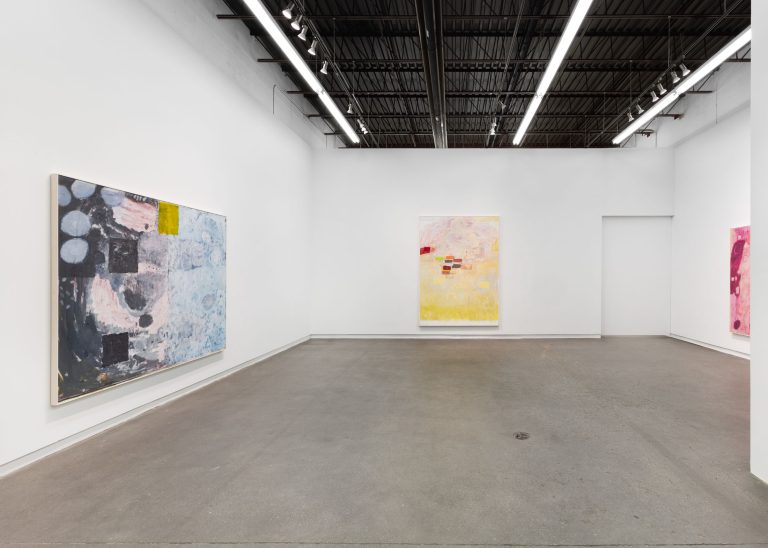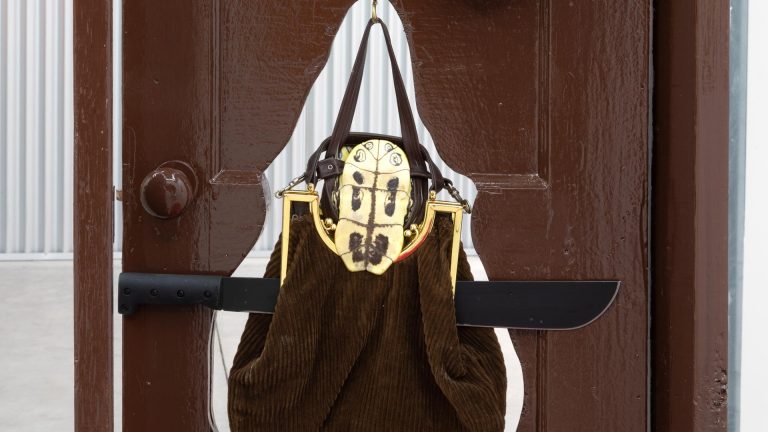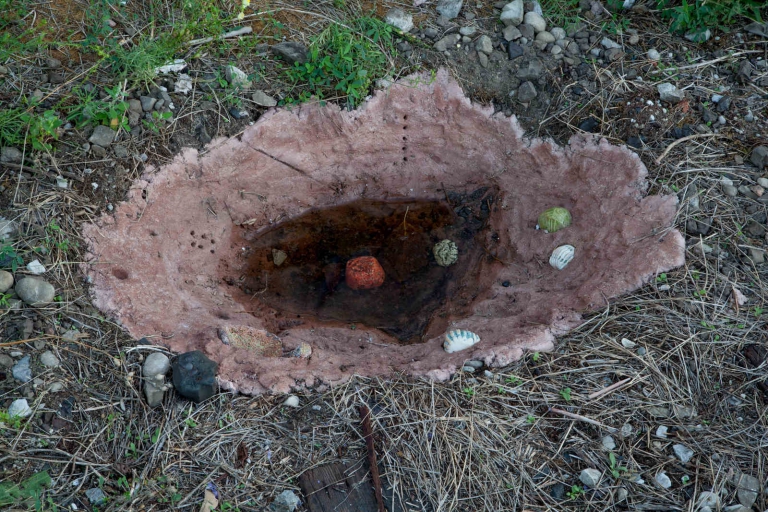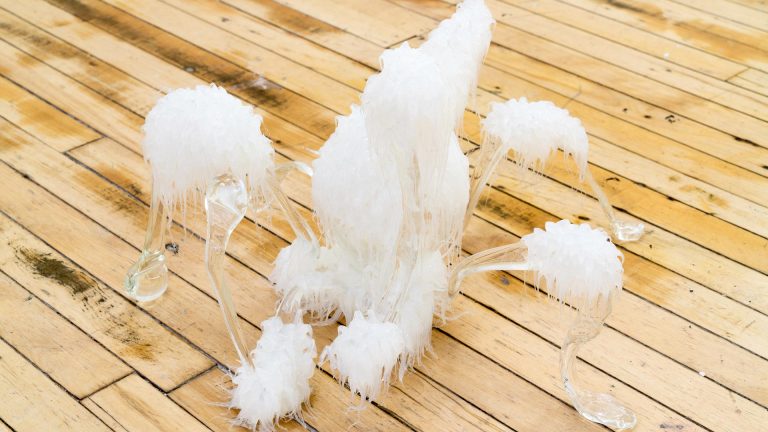Artist: Ayla Dmyterko
Exhibition title: Liberate Thee, Angel of History
Venue: Pangée, Montreal, Canada
Date: June 3 – July 15, 2023
Photography: all images copyright and courtesy of the artist and Pangée, Montreal
“Never regret thy fall, O Sophia of the fearless flight, for the greatest tragedy of them all, is never to feel the burning light.” – author unknown
The Angelus Novus (New Angel) is a 1920 oil transfer monoprint by Paul Klee. It depicts an angel transfixed in the static nature of the image. They are trapped in a longing gaze to the past, while their wings attempt to propel them forward. Like Icarus’ grand yet inade-quate wings, they are bound together with earthly substance – by oil, by wax. In Liberate Thee, Angel of History, Ayla Dmyterko coaxes the angel of history to liberate itself from this medial state – to come into presence. Transposing the angel, she embodies its lessons in the exhibition’s large-scale fantasti-cal compositions, chromatic abstractions, woven paintings, and moving image work.
Philosopher and critical theorist Walter Benjamin felt a mystical identification with the Angelus Novus as well and incorporated it into his theory of the “angel of history,” which critiques eternalizing the past as a continuum of progress. Saved by Hannah Arendt, it was written during the Second World War in an effort to make sense of the global downward spiral. Dmyterko applies this sentiment to reflect upon our turbulent present, relating it to Svetlana Boym’s The Future of Nostalgia (2001). Boym distinguishes two varying approaches to the past: restorative and reflec-tive nostalgia. Both rely on similar triggers of memory and symbolic coding. They diverge, however, in task, narration, and intention. Embracing sensitivity within archival and familial research, Dmyterko considers history as forever shifting, eternally recurring, and warping across perspectives. The core of her practice is most interested in how to ethically look to the past, to the margins of history, and how to bring this into the present, in hope of a less destabilizing future.
In an alternative rhythm to the age of accelerated images and information, Dmyterko offers viewers spaces to remain present in colour, form, and fantasy. As colour sits on the outer edges of language and defi-nition, so does silence and meditation, which quietly echo throughout these works. Drawing upon lineages of abstraction, colour theory, and surrealism, her auto-theoretical impulse extends to include the acade-micized alongside the vernacular, pre-patriarchal, fictional, tacit, folkloric, and anachronistic. This wide scope weaves lessons in meditation through repeti-tion in nature, therapeutic qualities latent in folkloric textiles, eternally recurring symbolism, and the importance of community. She is inspired by painter Agnes Martin’s “On the Perfection Underlying Life” (1973) that describes freedom as “idyllic memories of perfection,” which can be contemplated through painting. This a pproach is similar to how embroidery work is practiced in Ukrainian culture, where only the clearest mind is thought to inspire pareidolic patter-ning, weaving emotions into the cloth that are carried with it. This belief is one that Dmyterko transfers to her painting practice, setting the tone for freedom through soft contemplation. In Liberate Thee, Angel of History, Dmyterko questions present-tense subjec-tivity while looking at the past and asks how futurisms can offer alternative formats, allowing our wings to carry us forward.
Text by Ayla Dmyterko
Edited by Clara Puton



